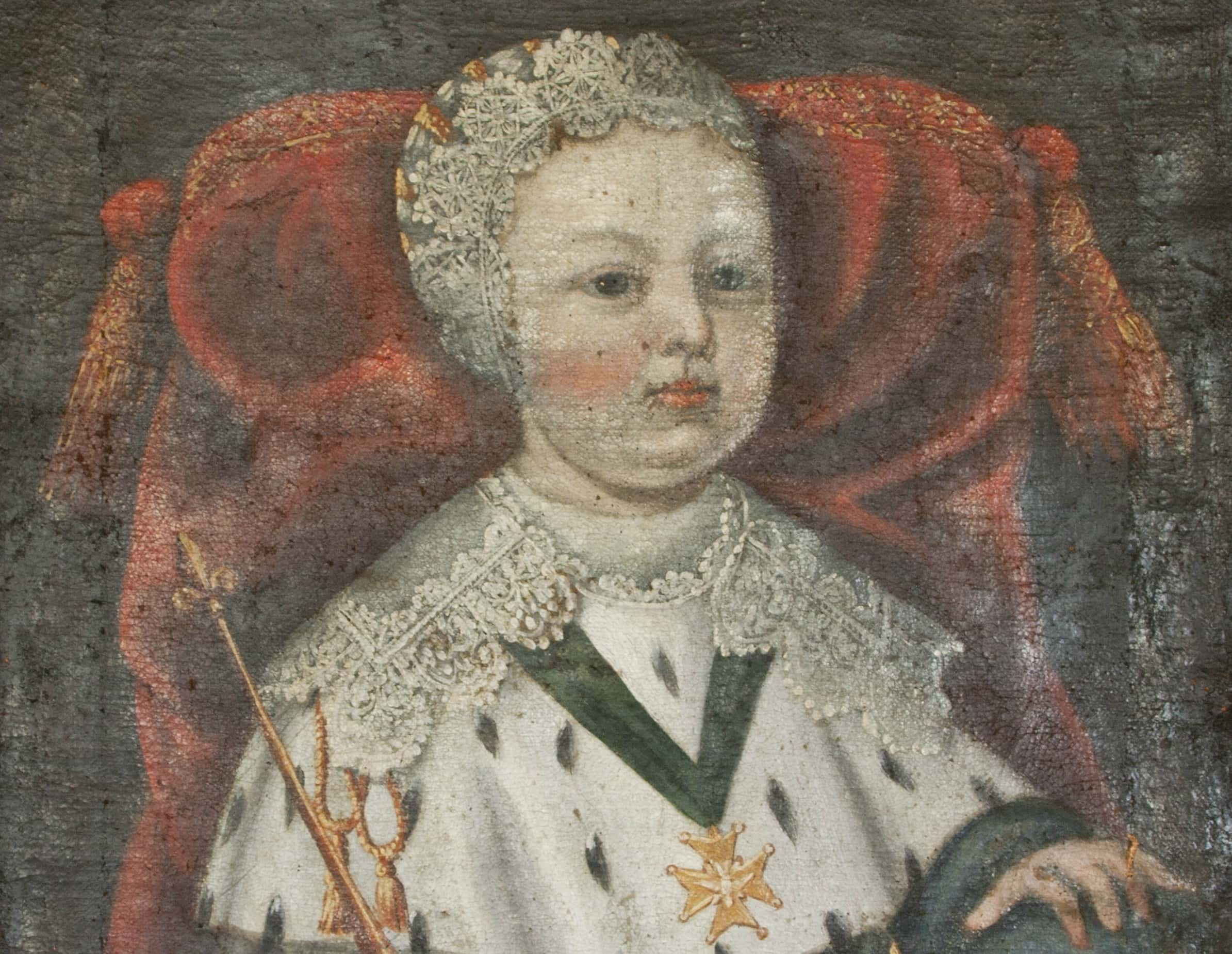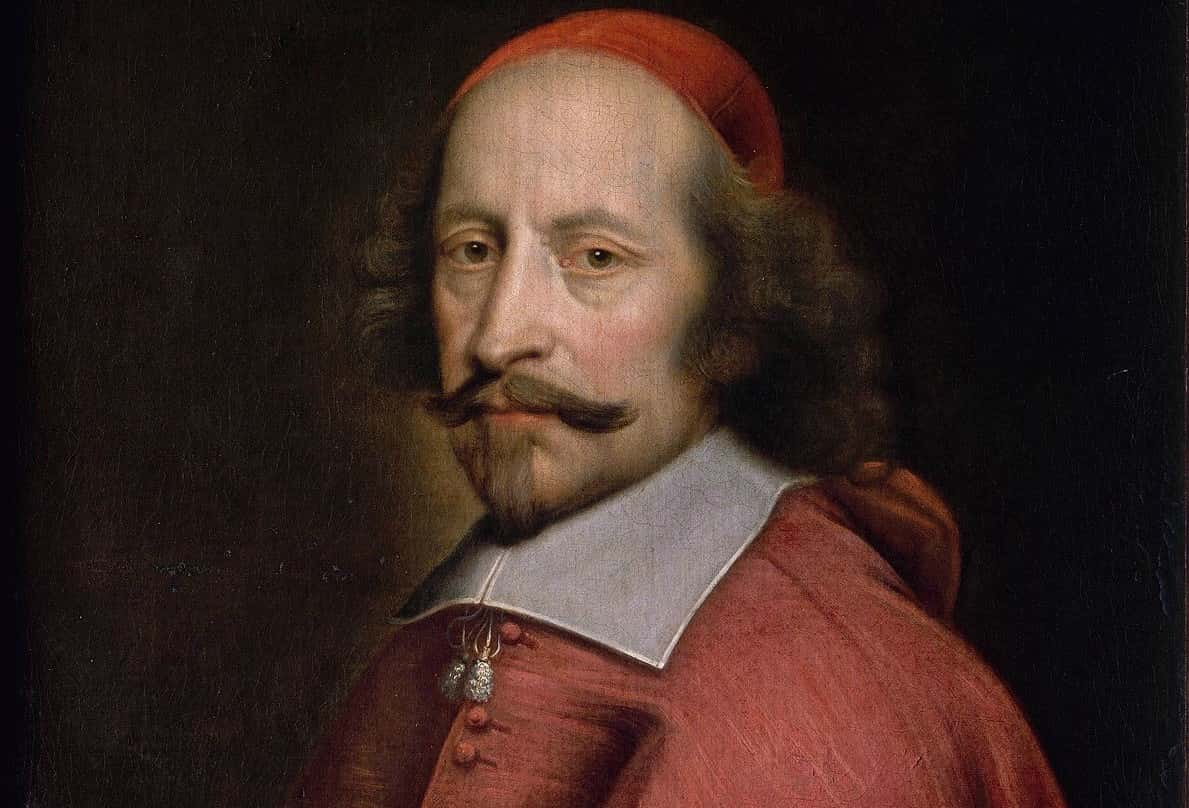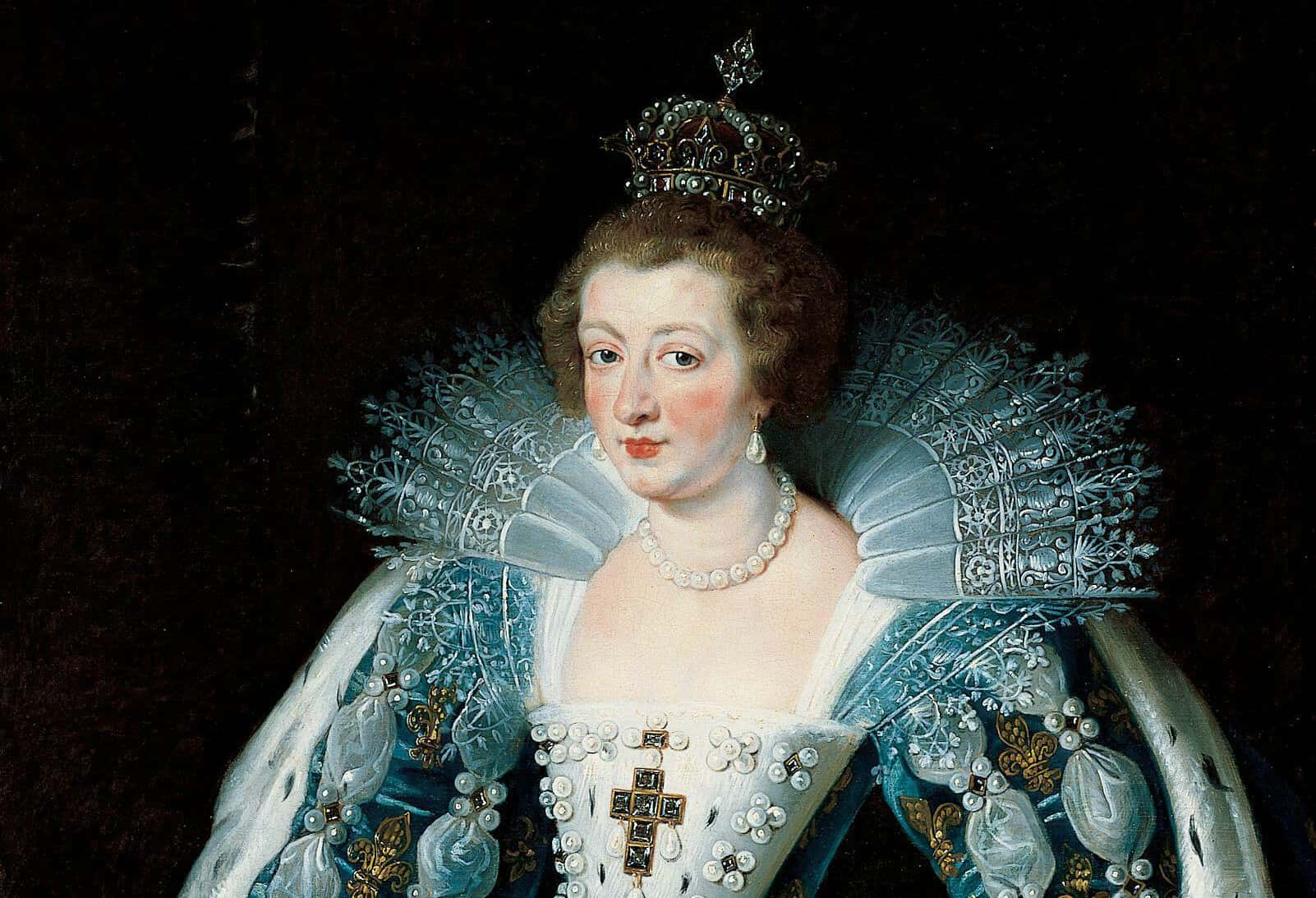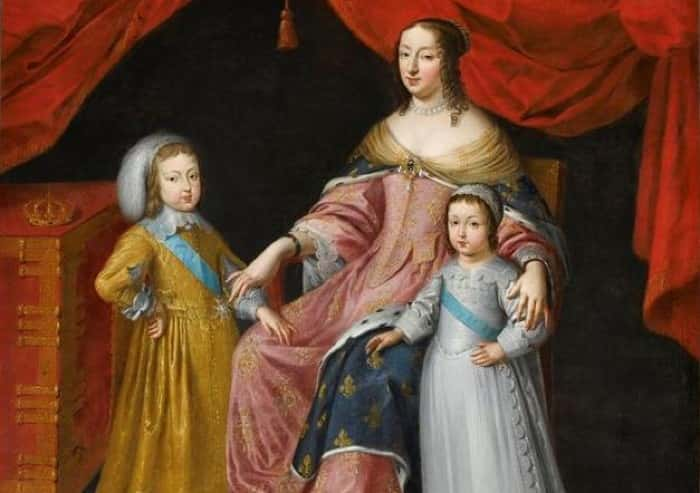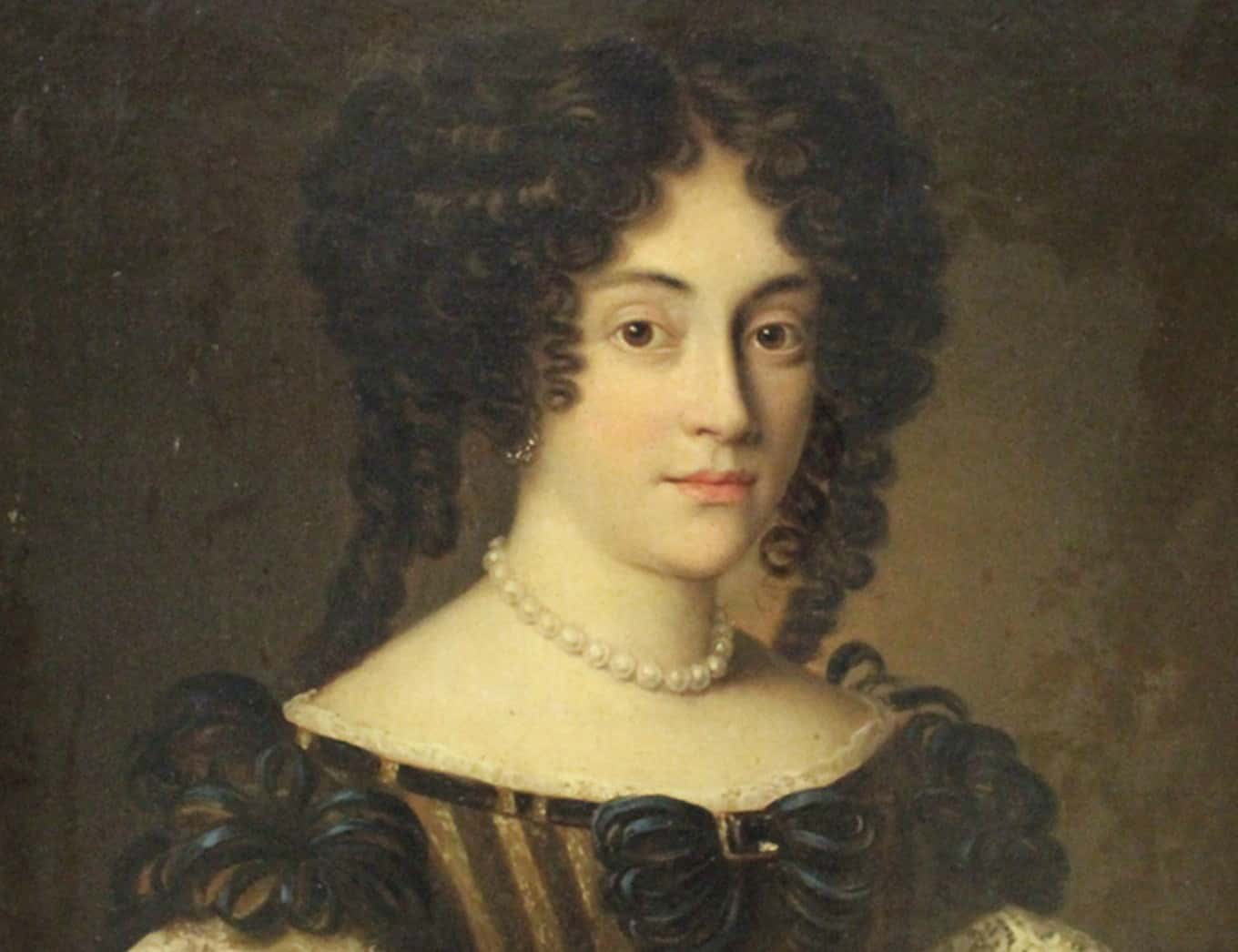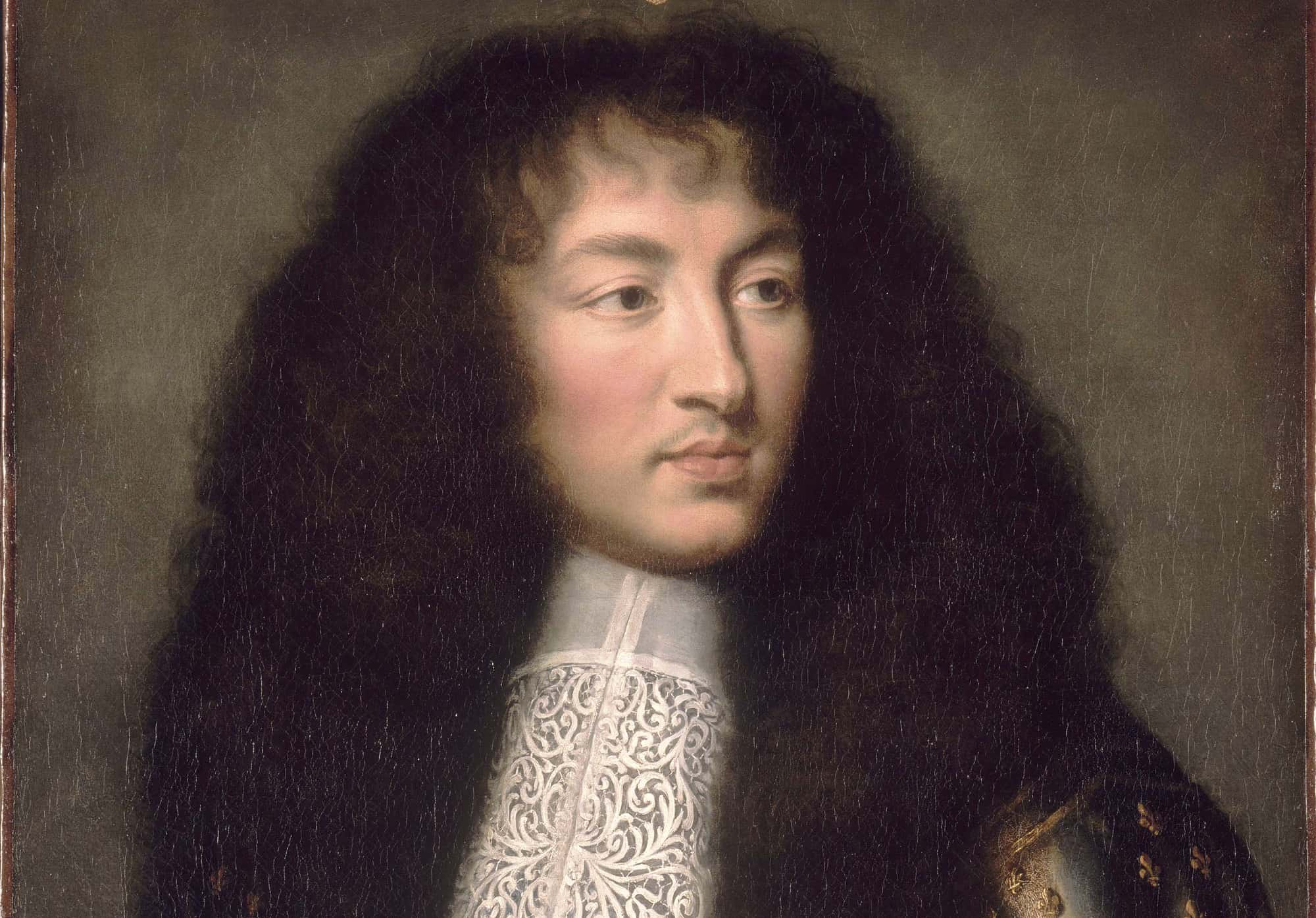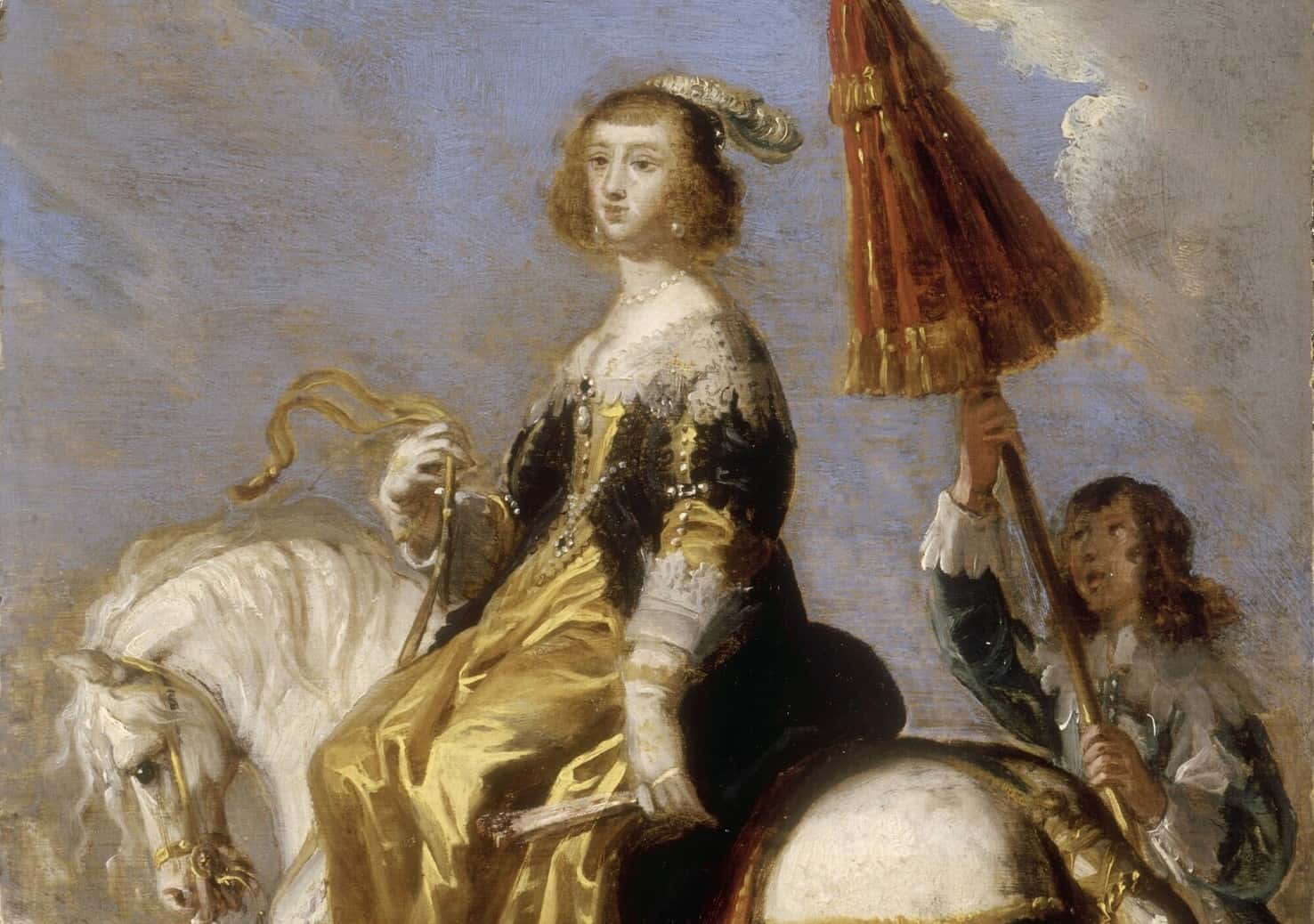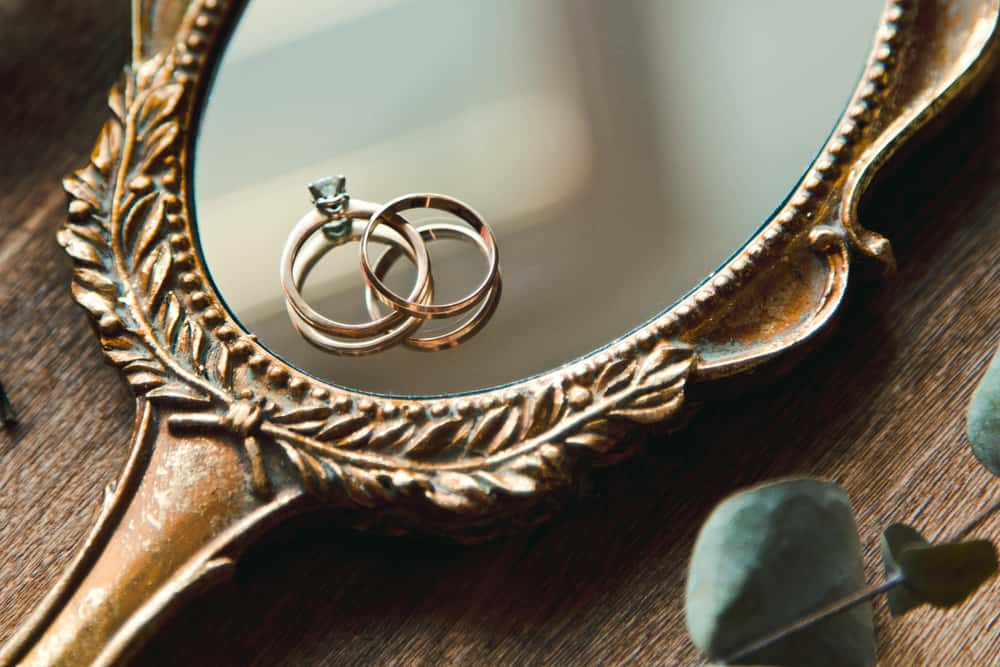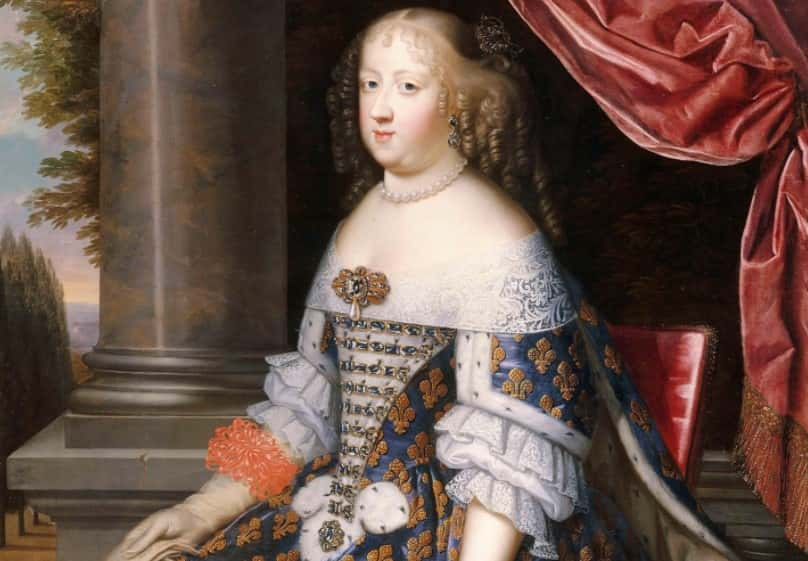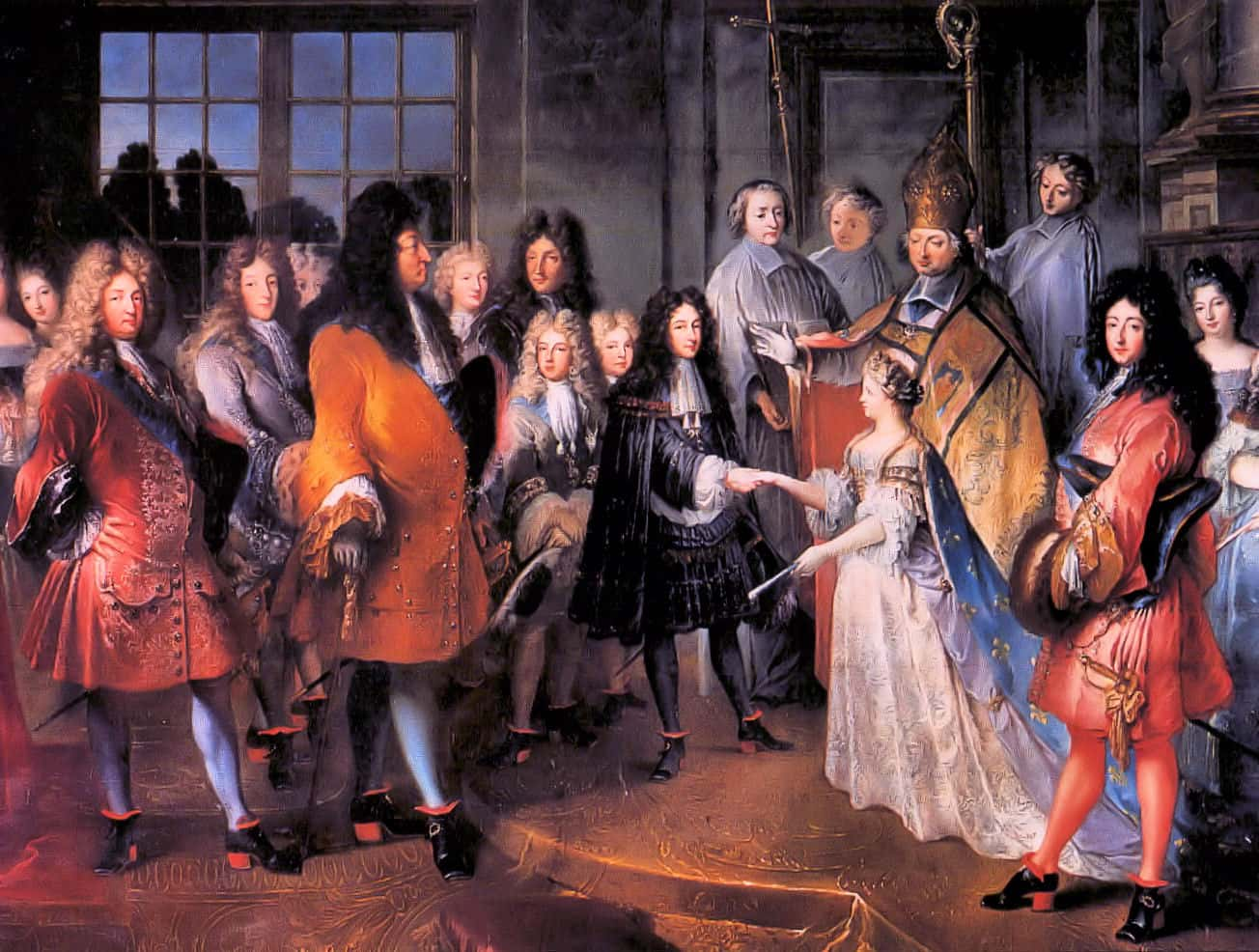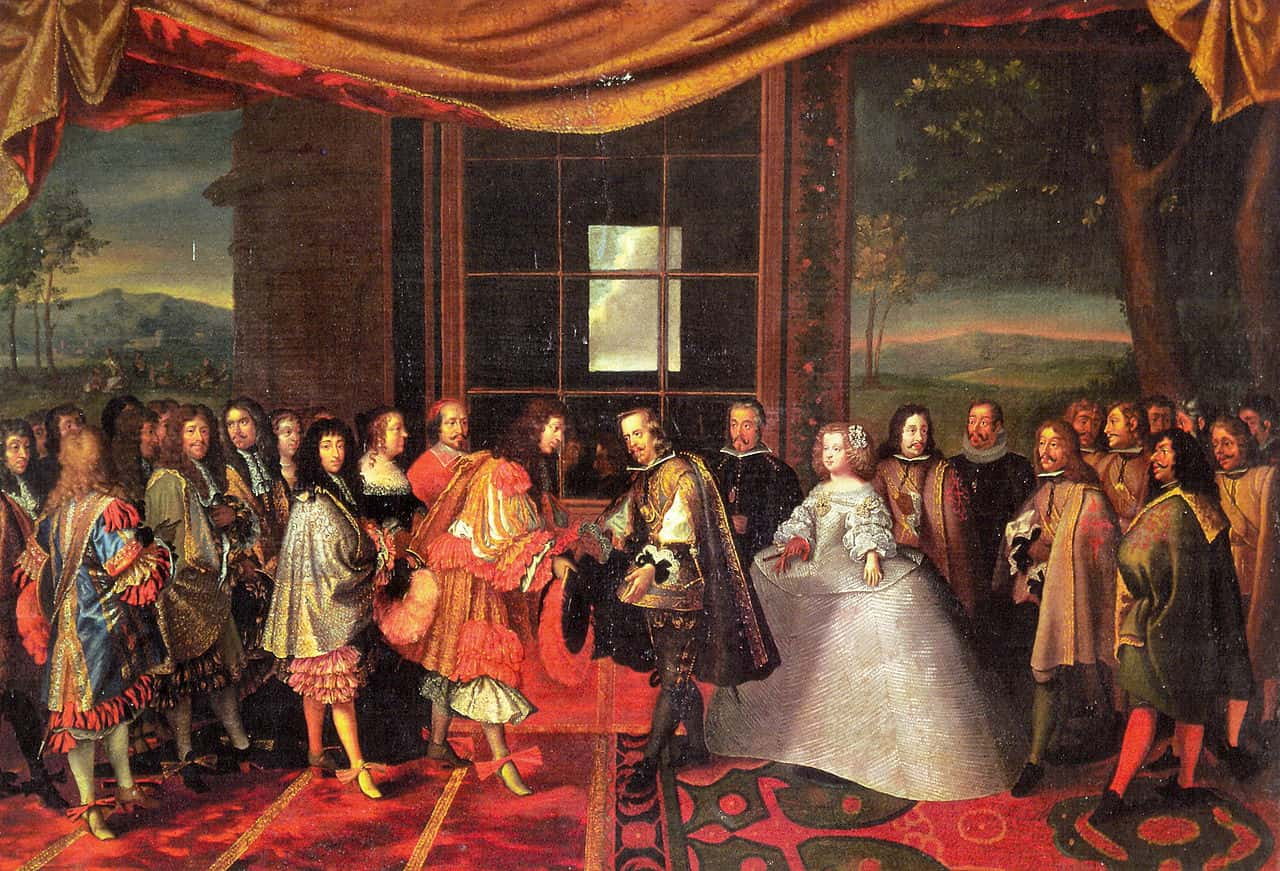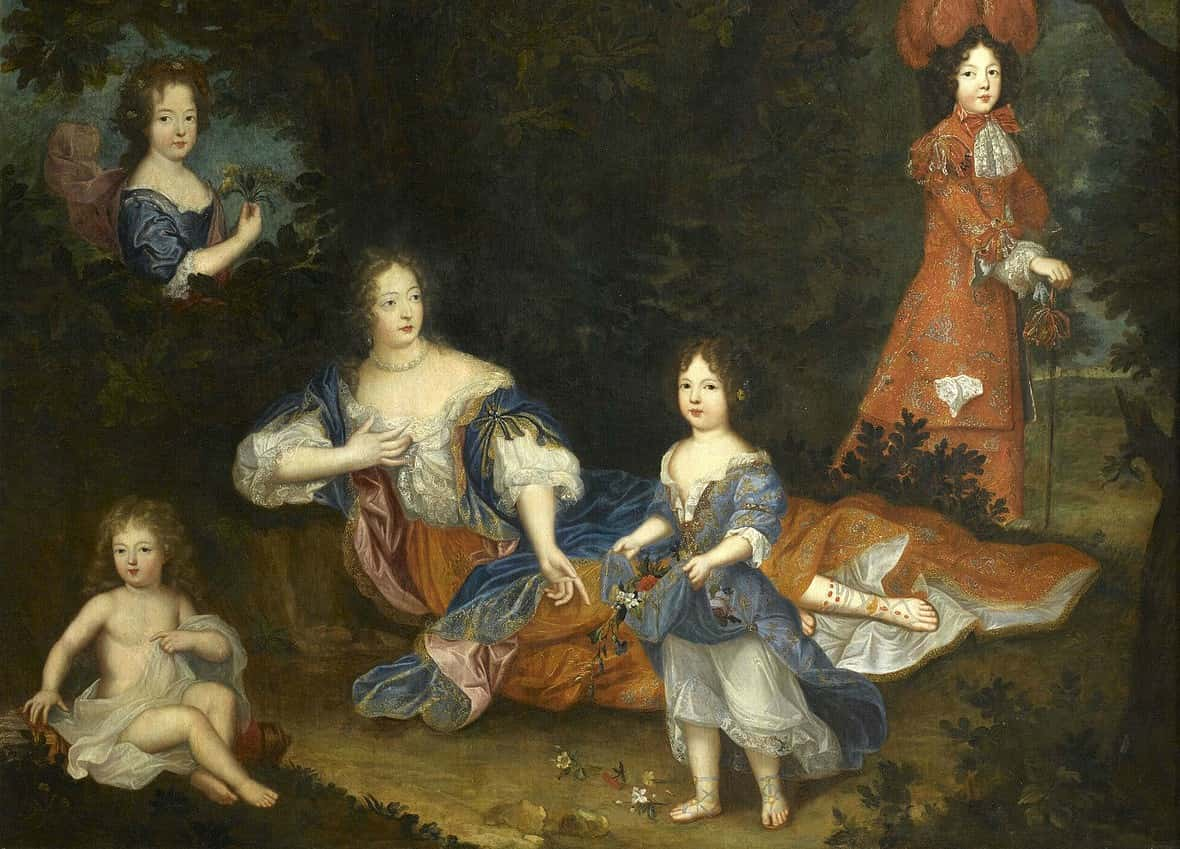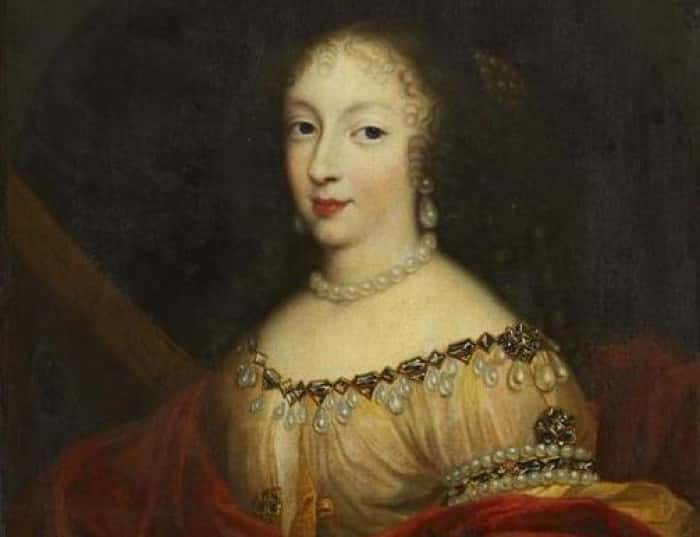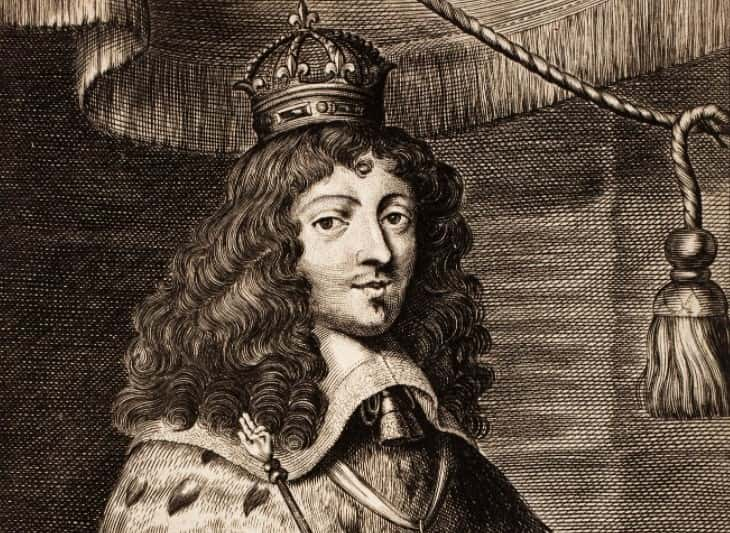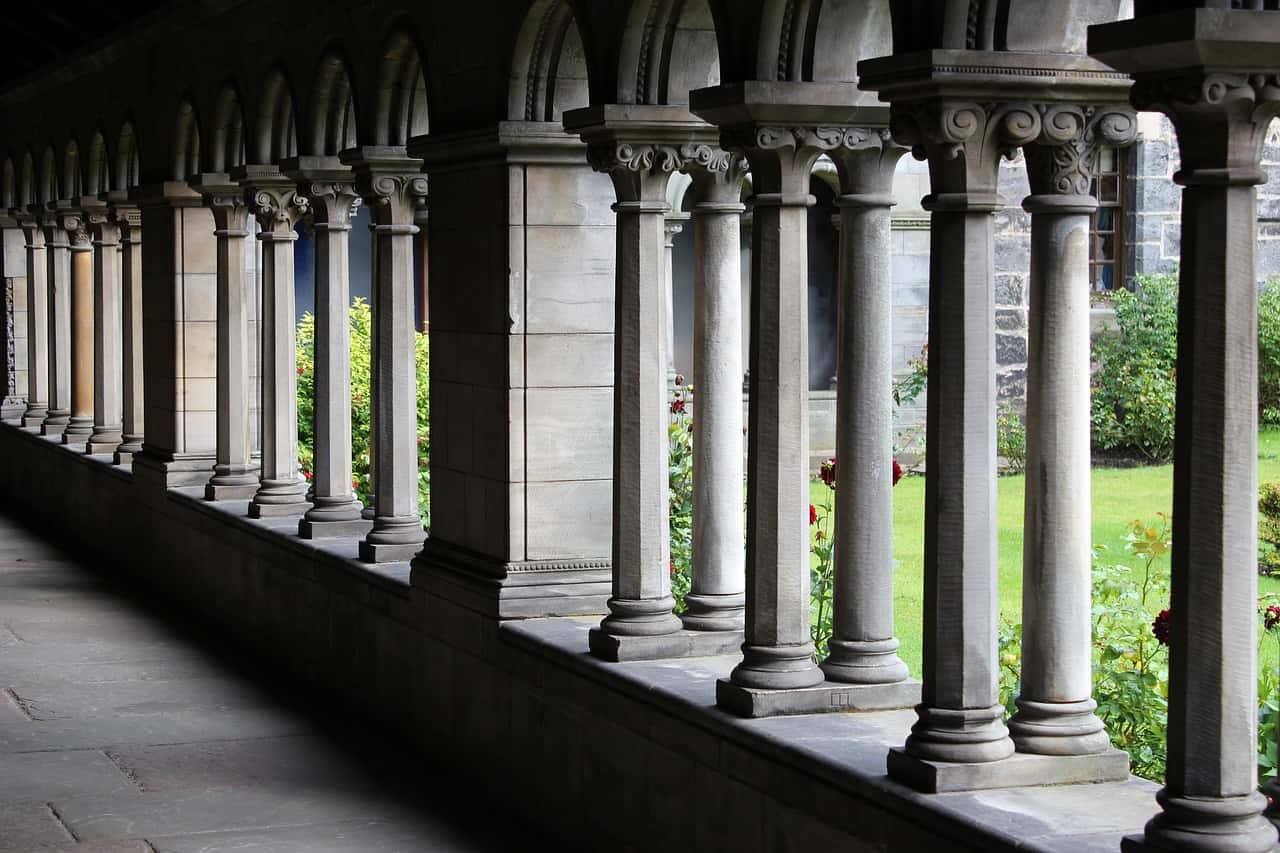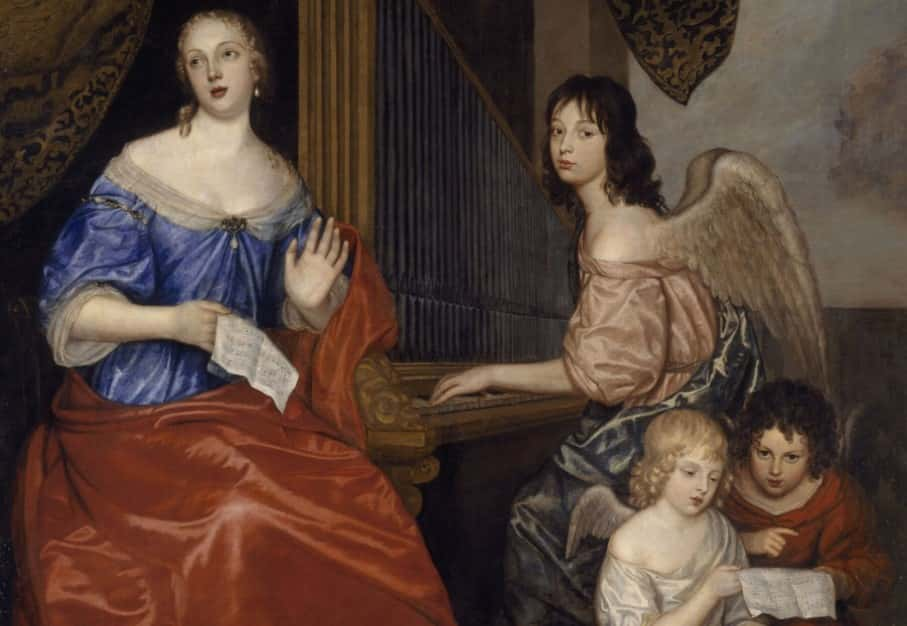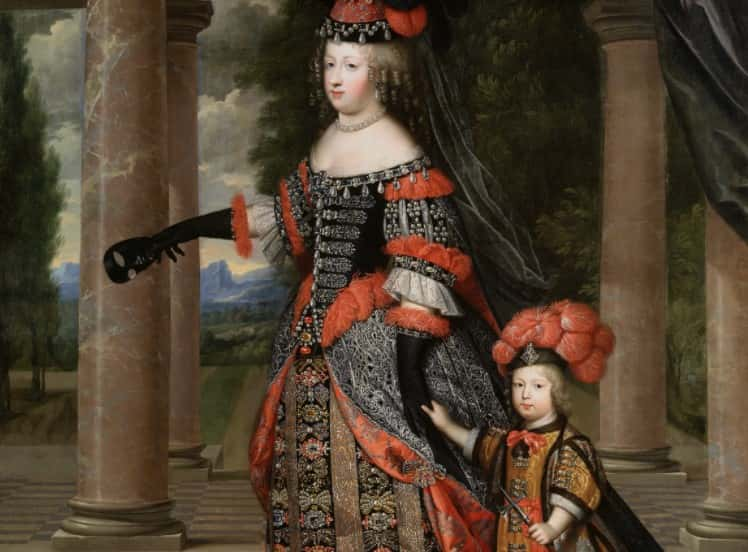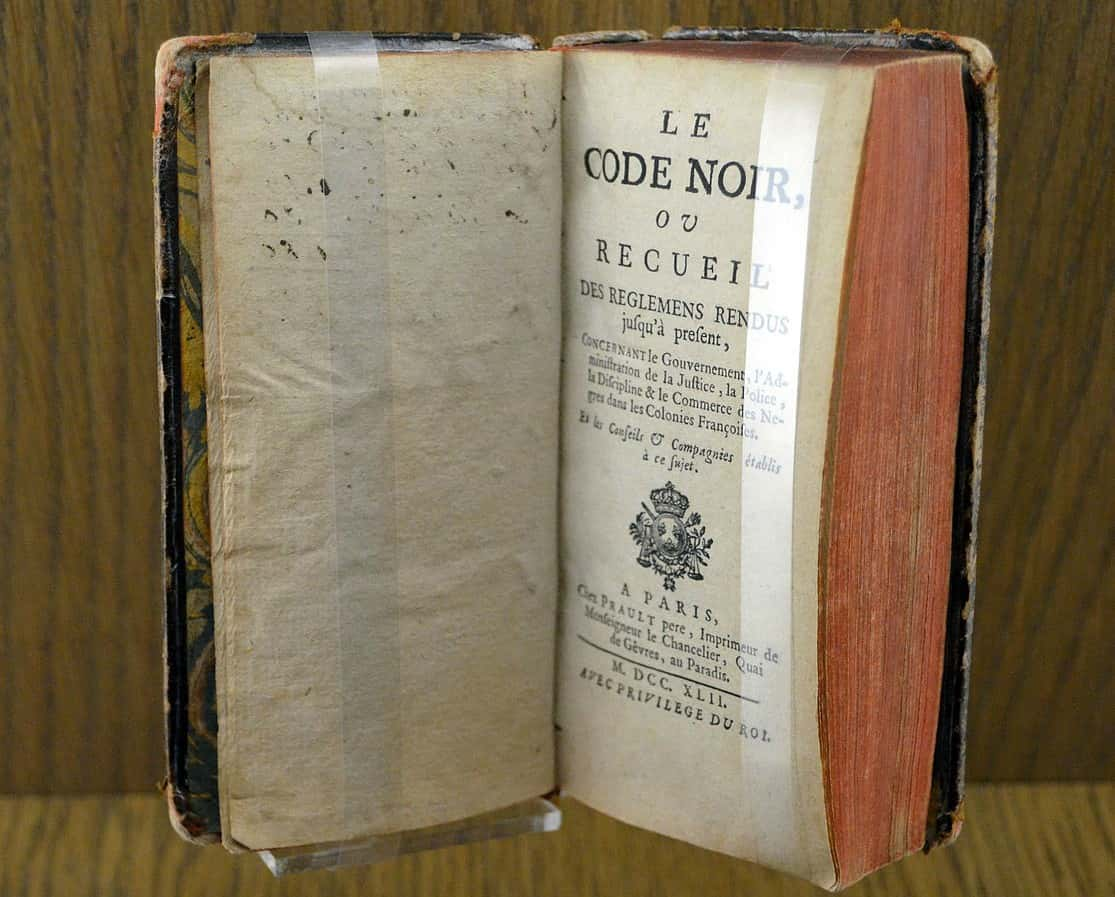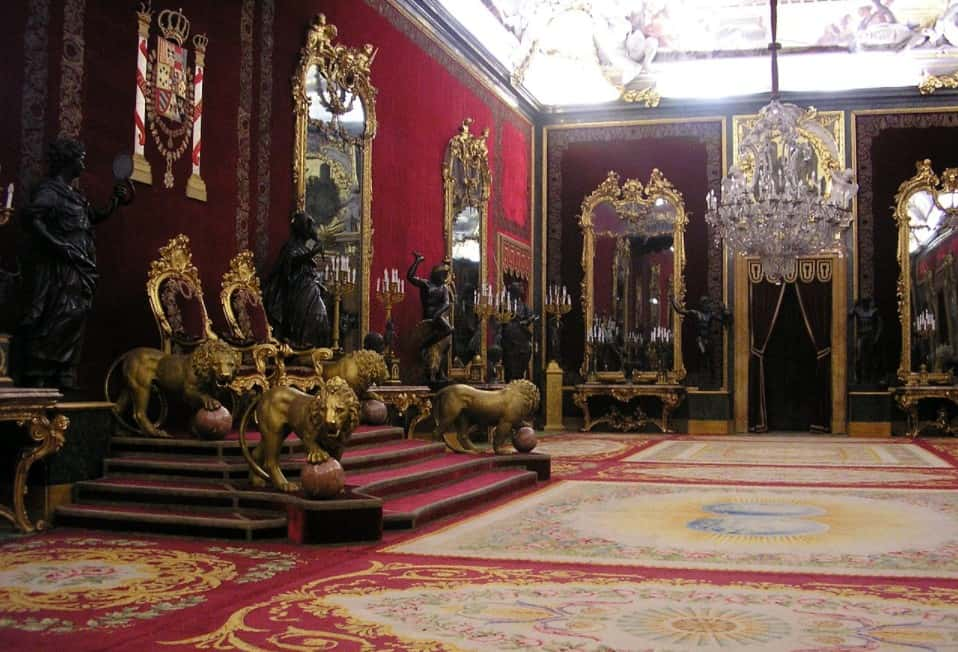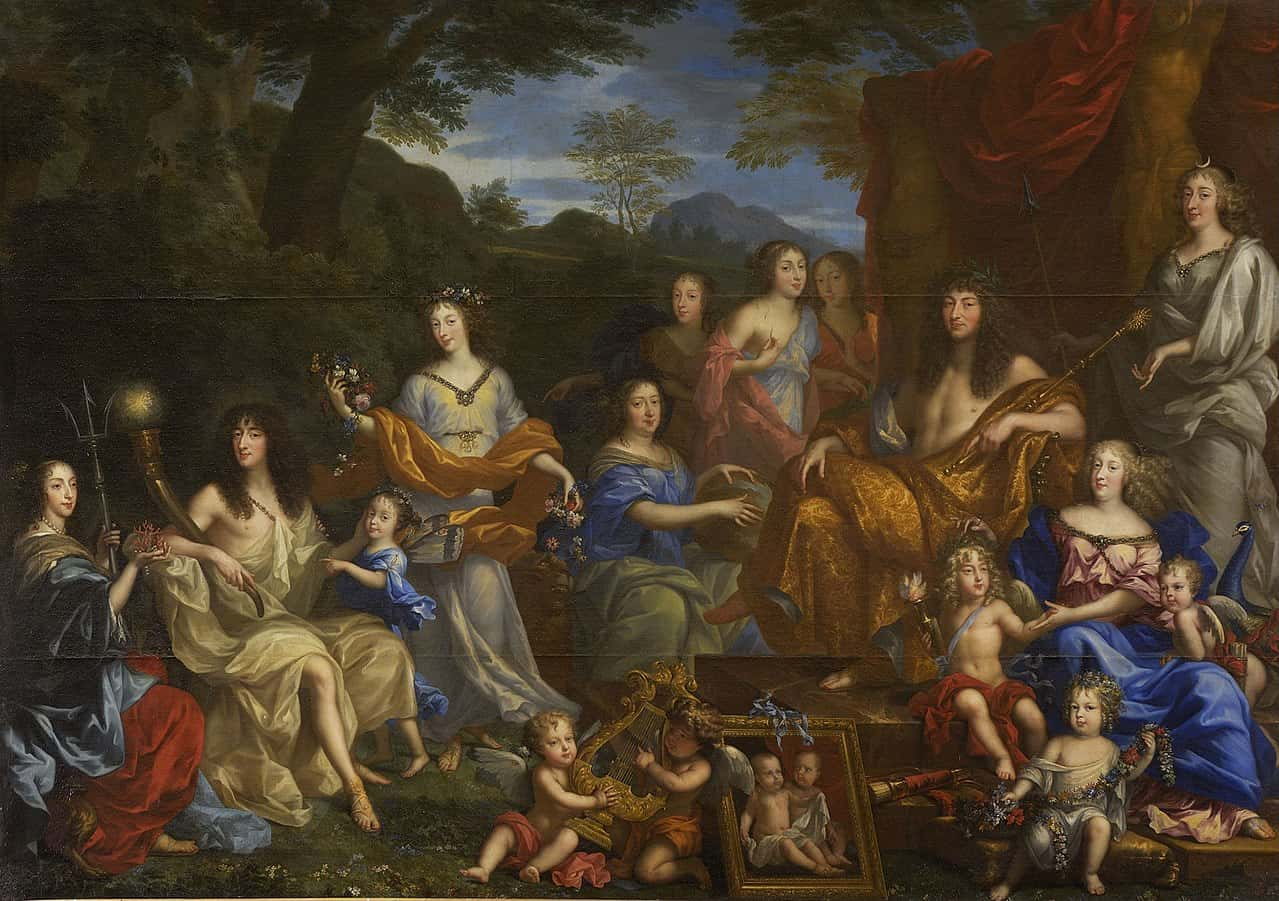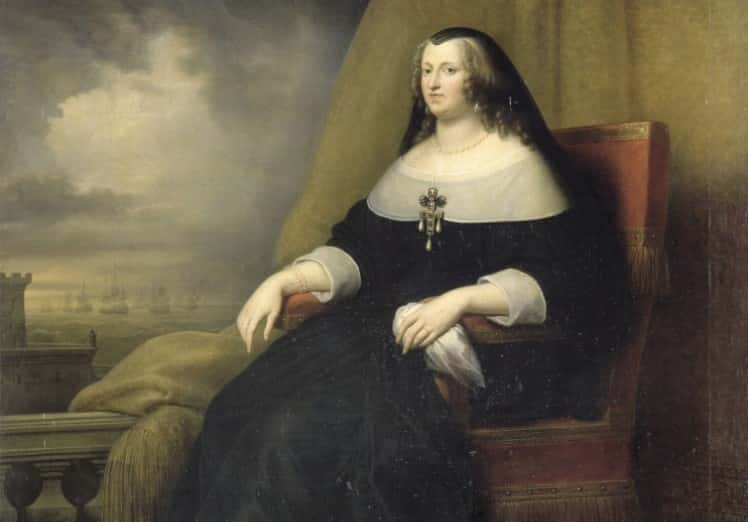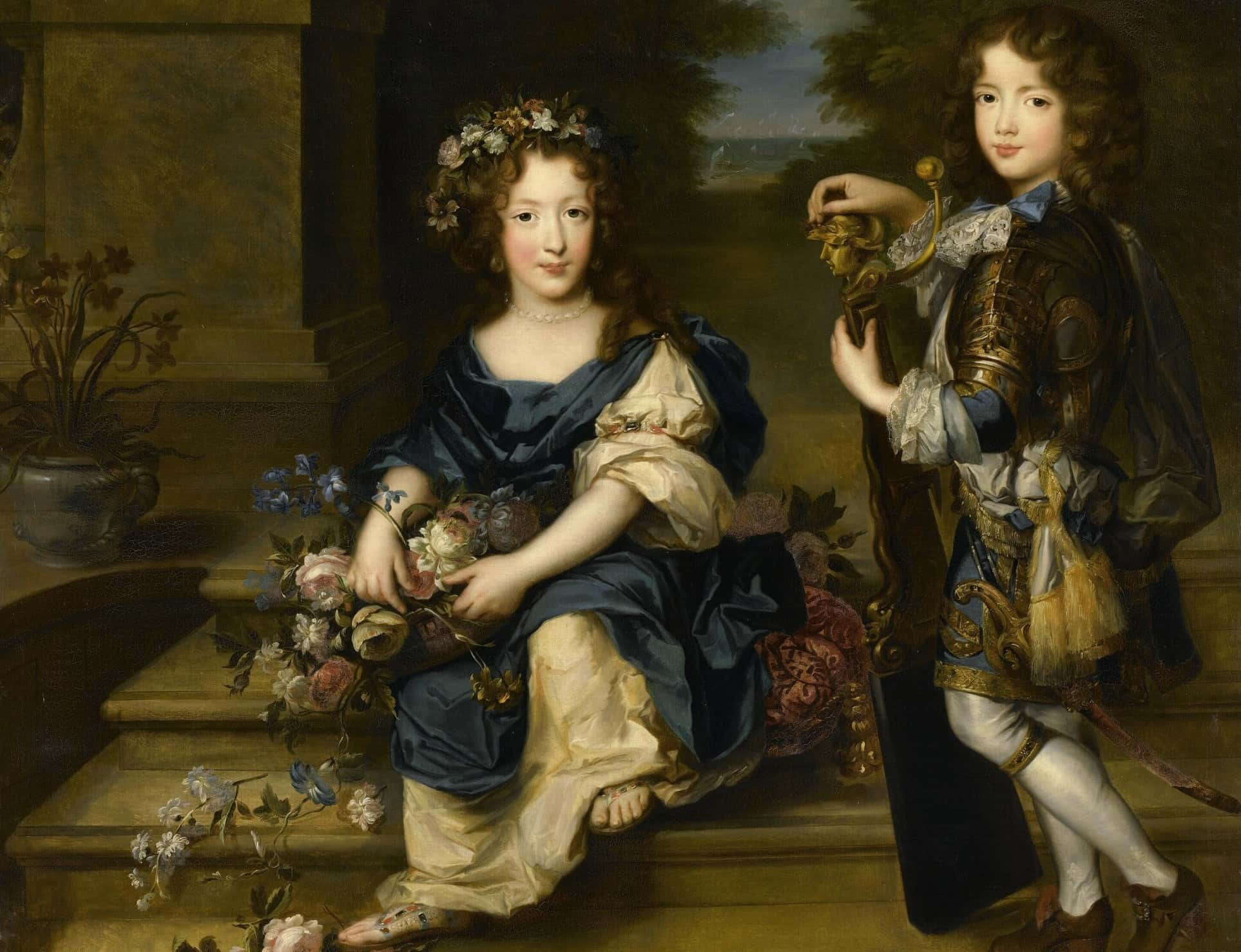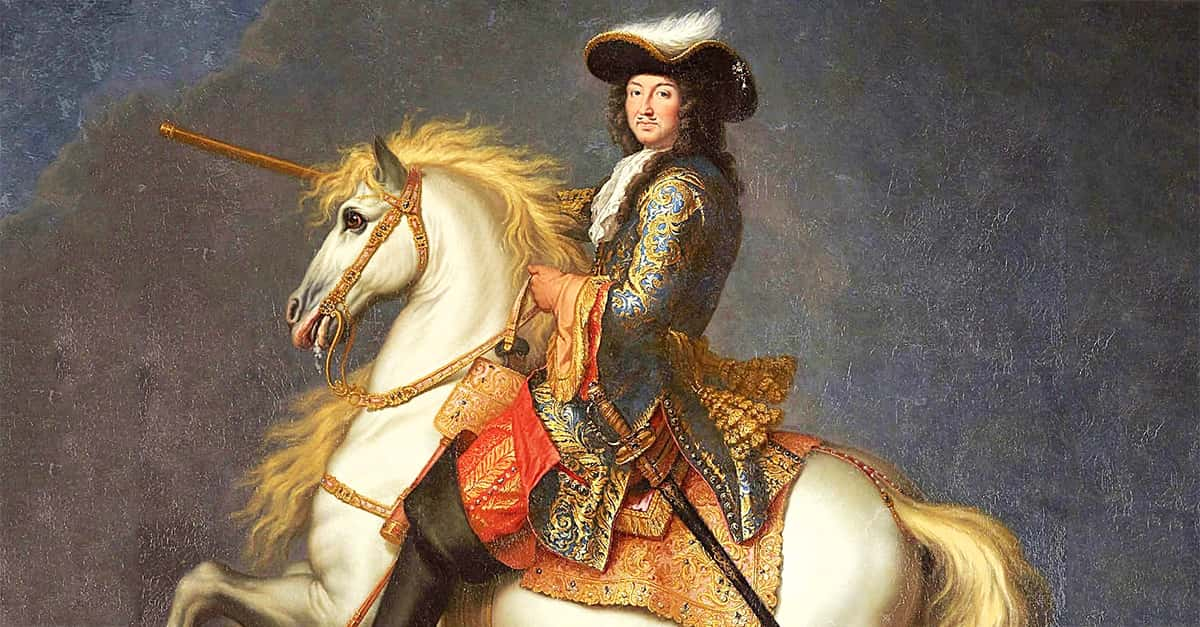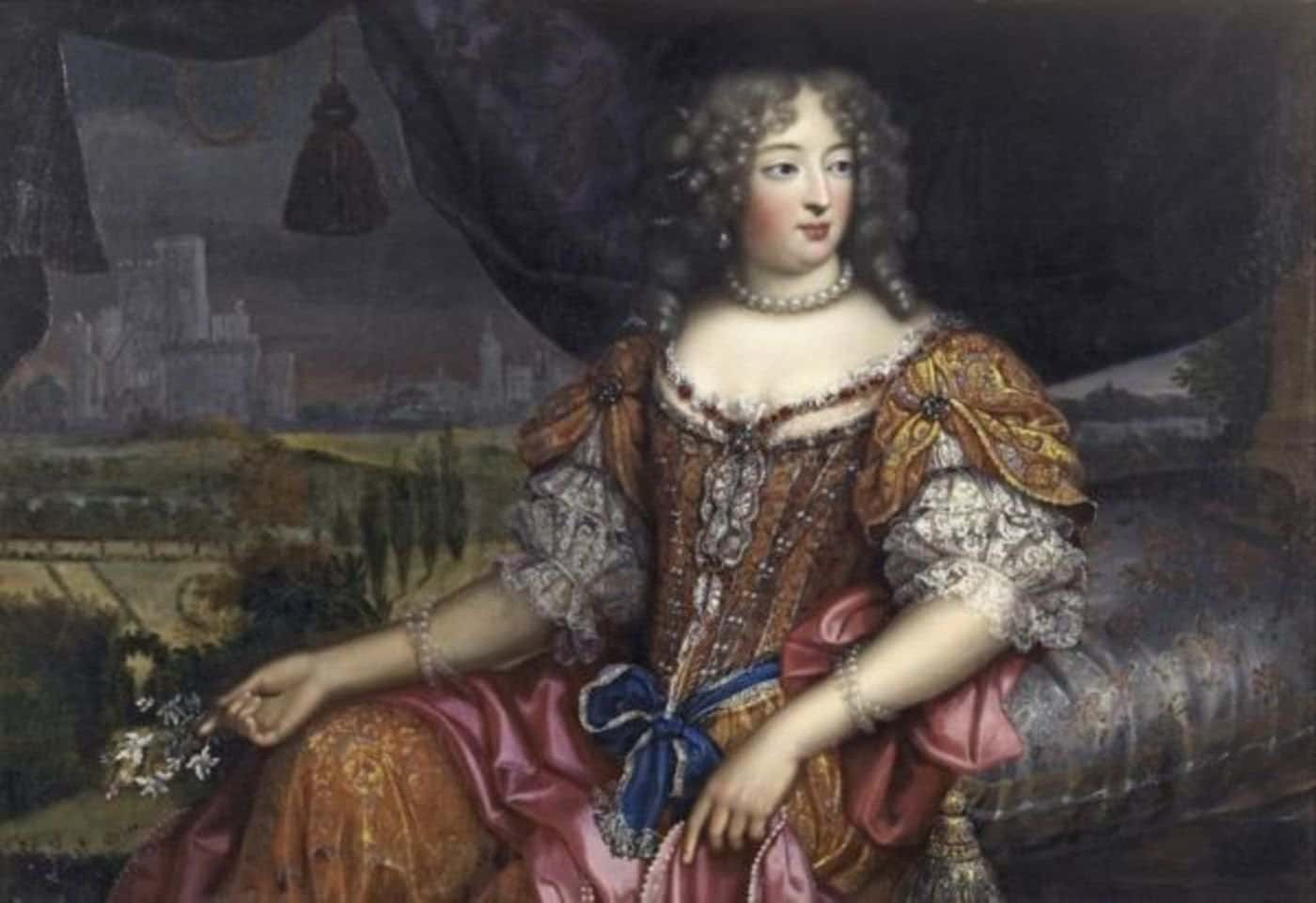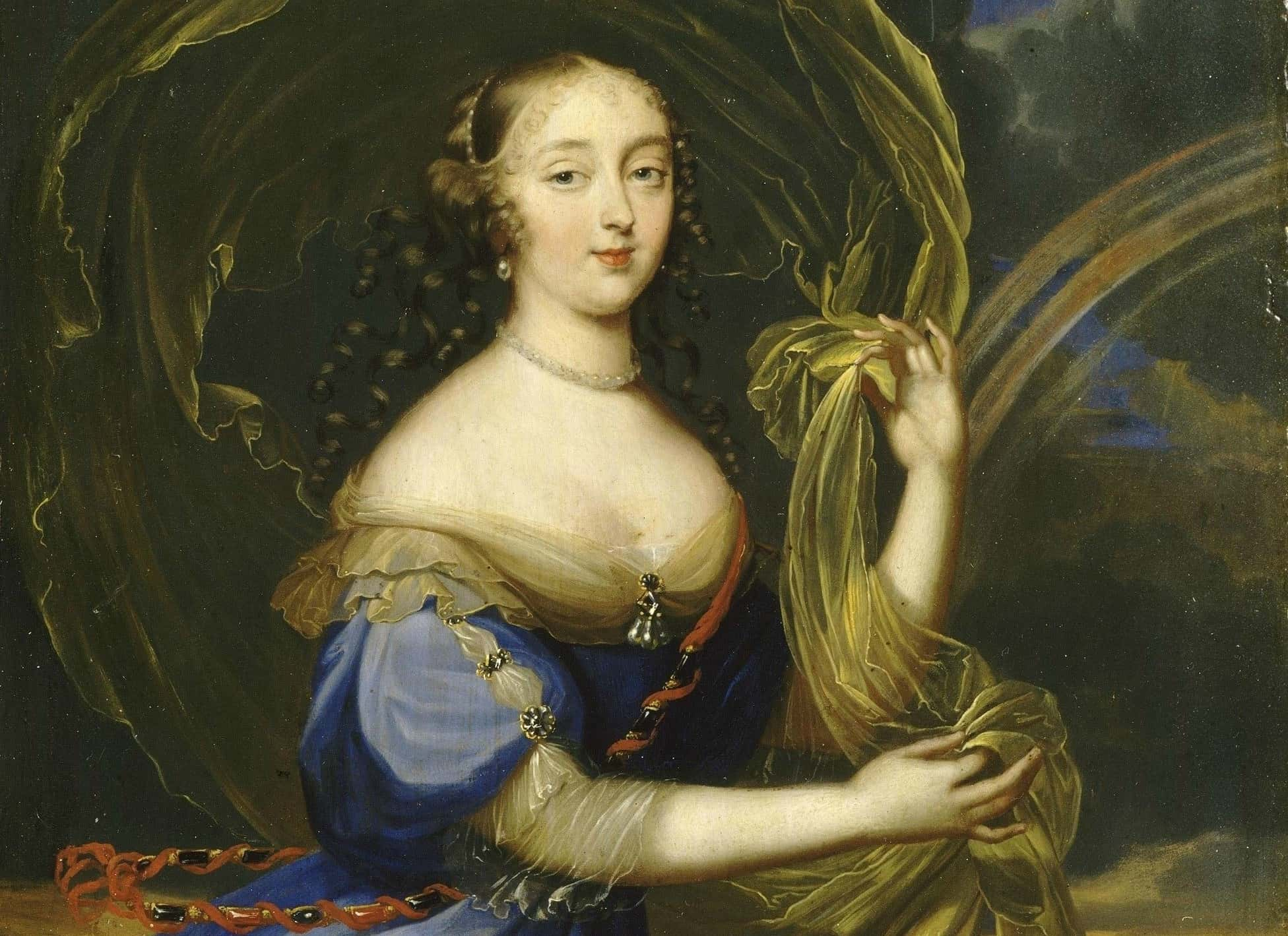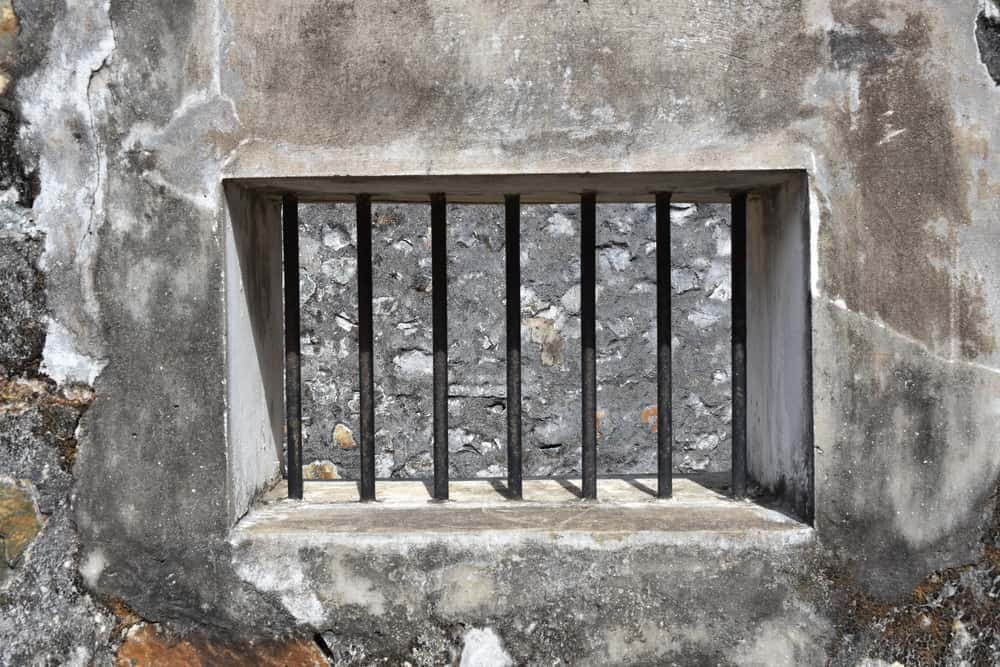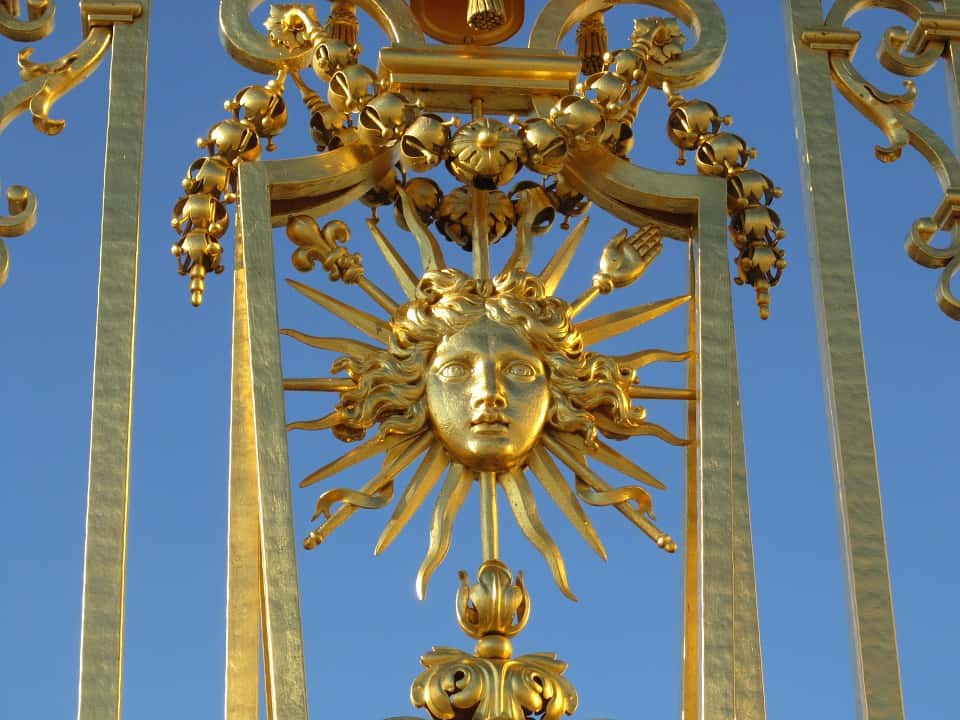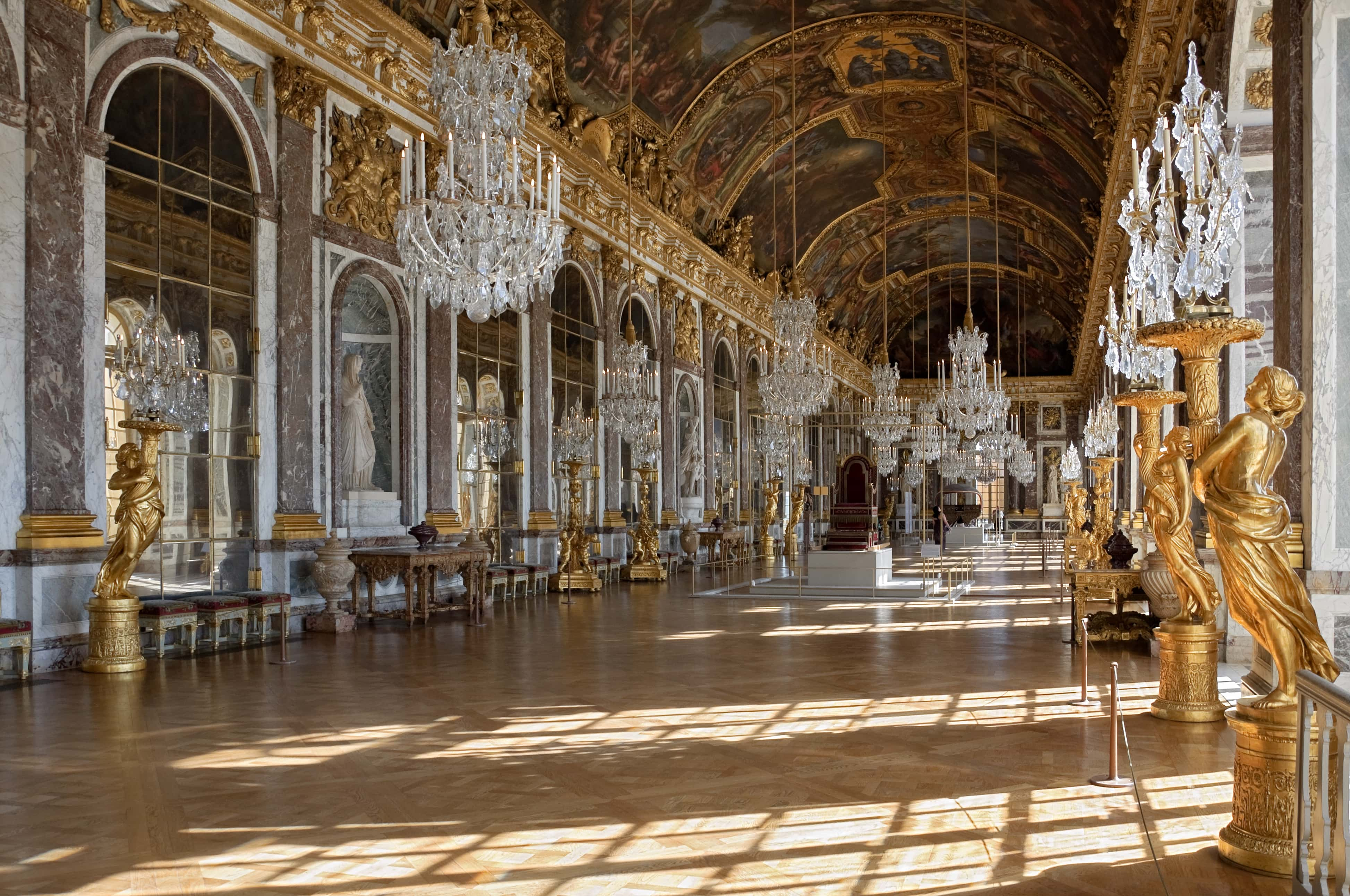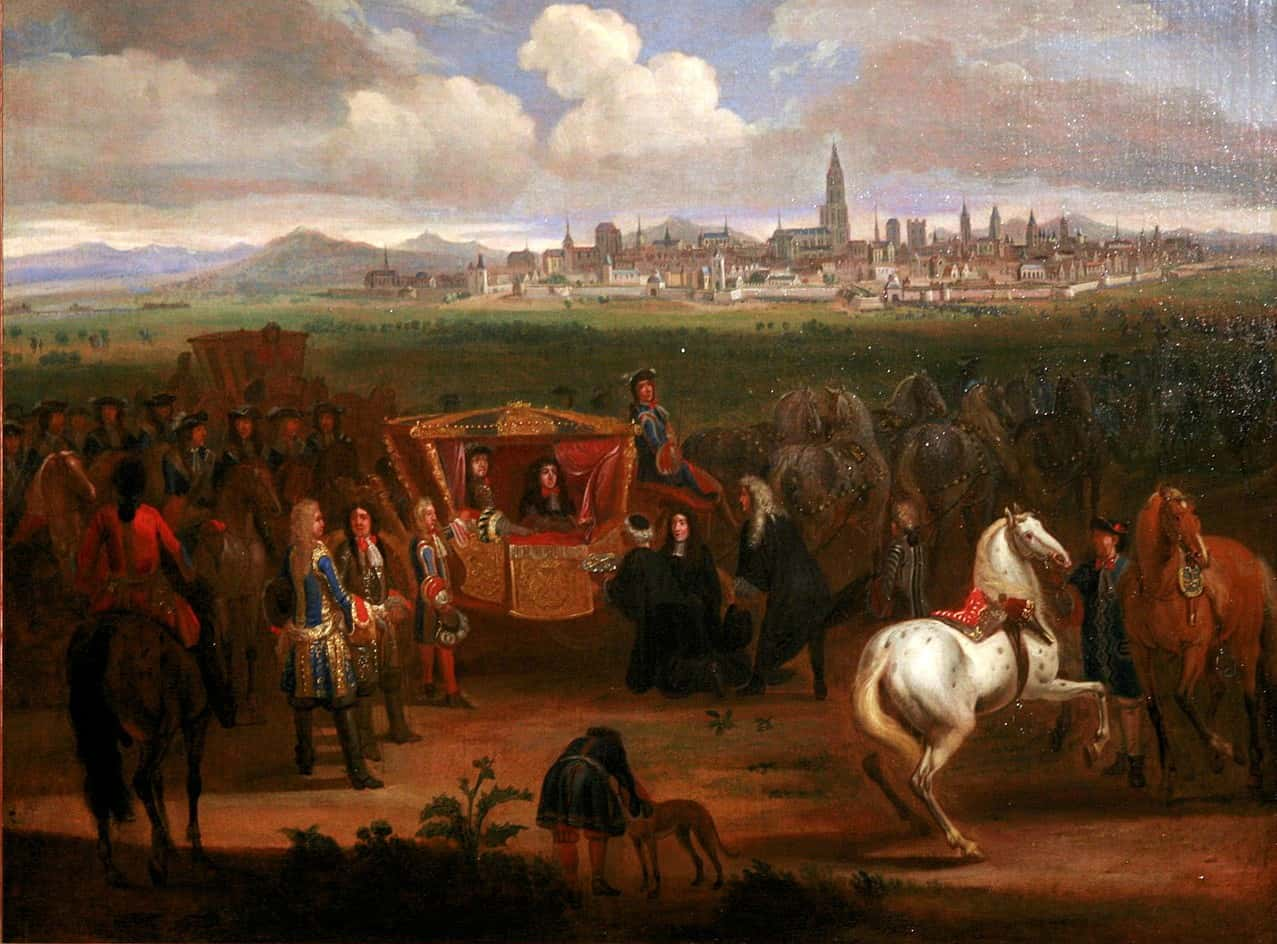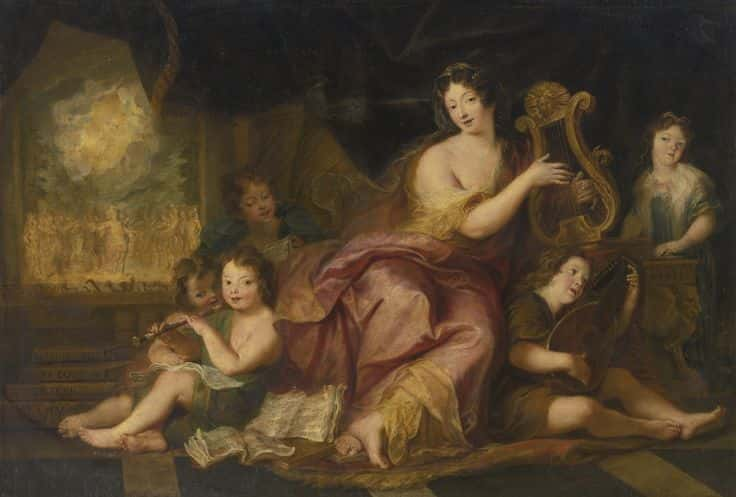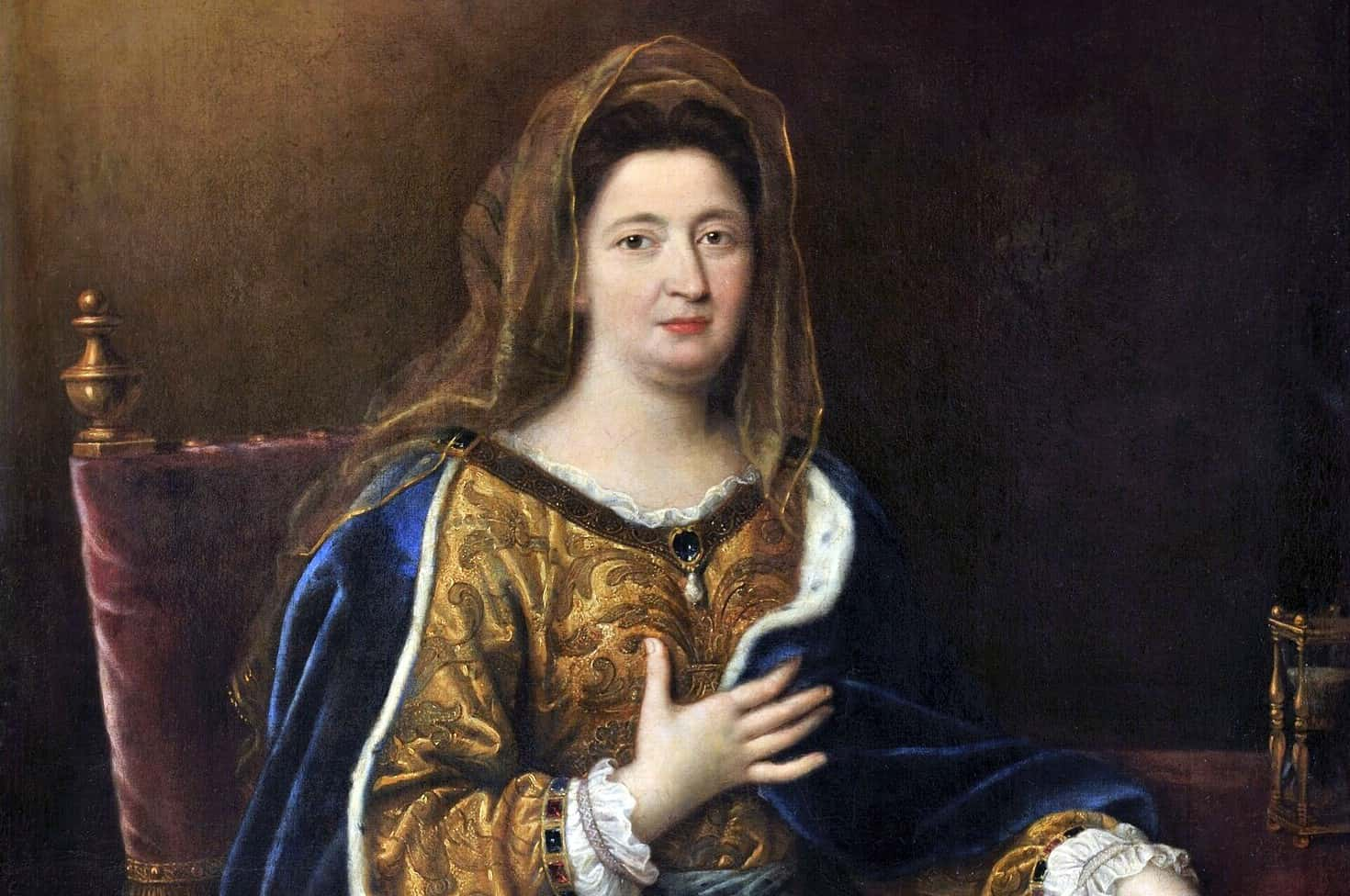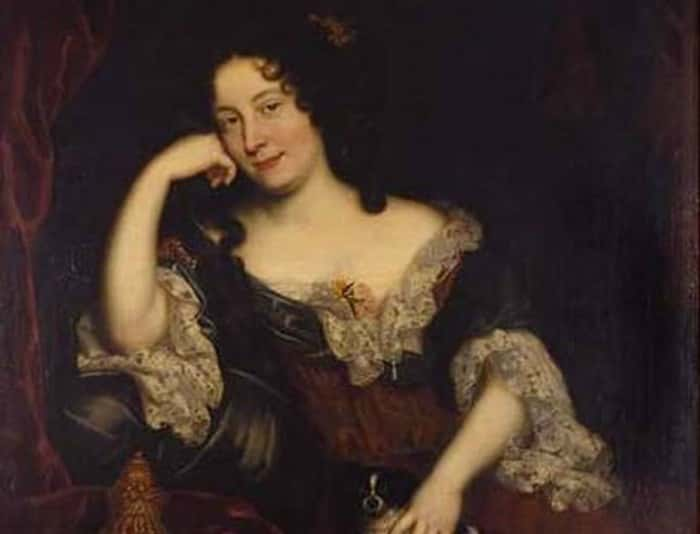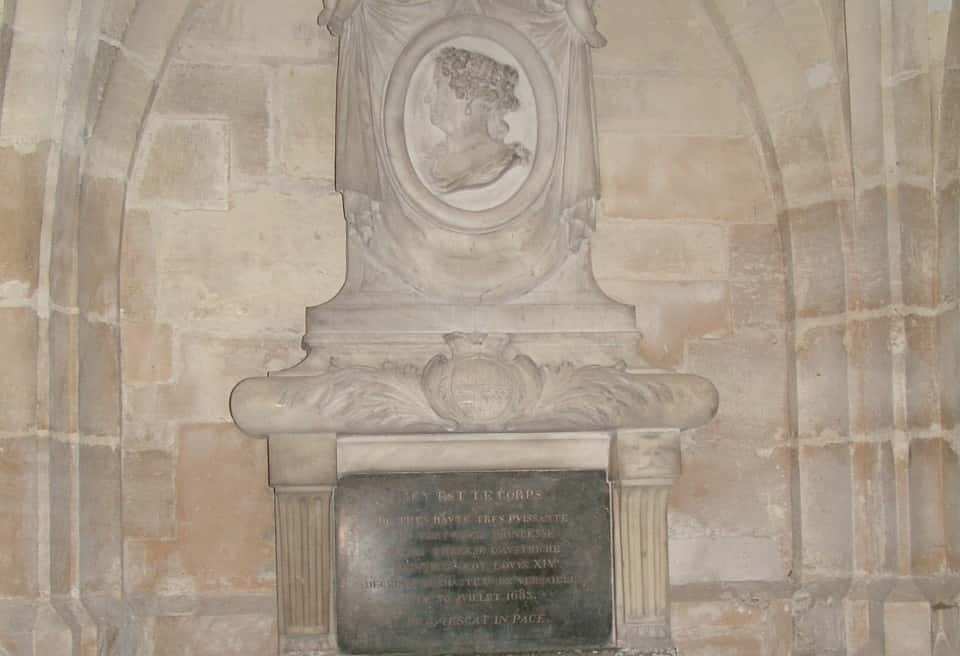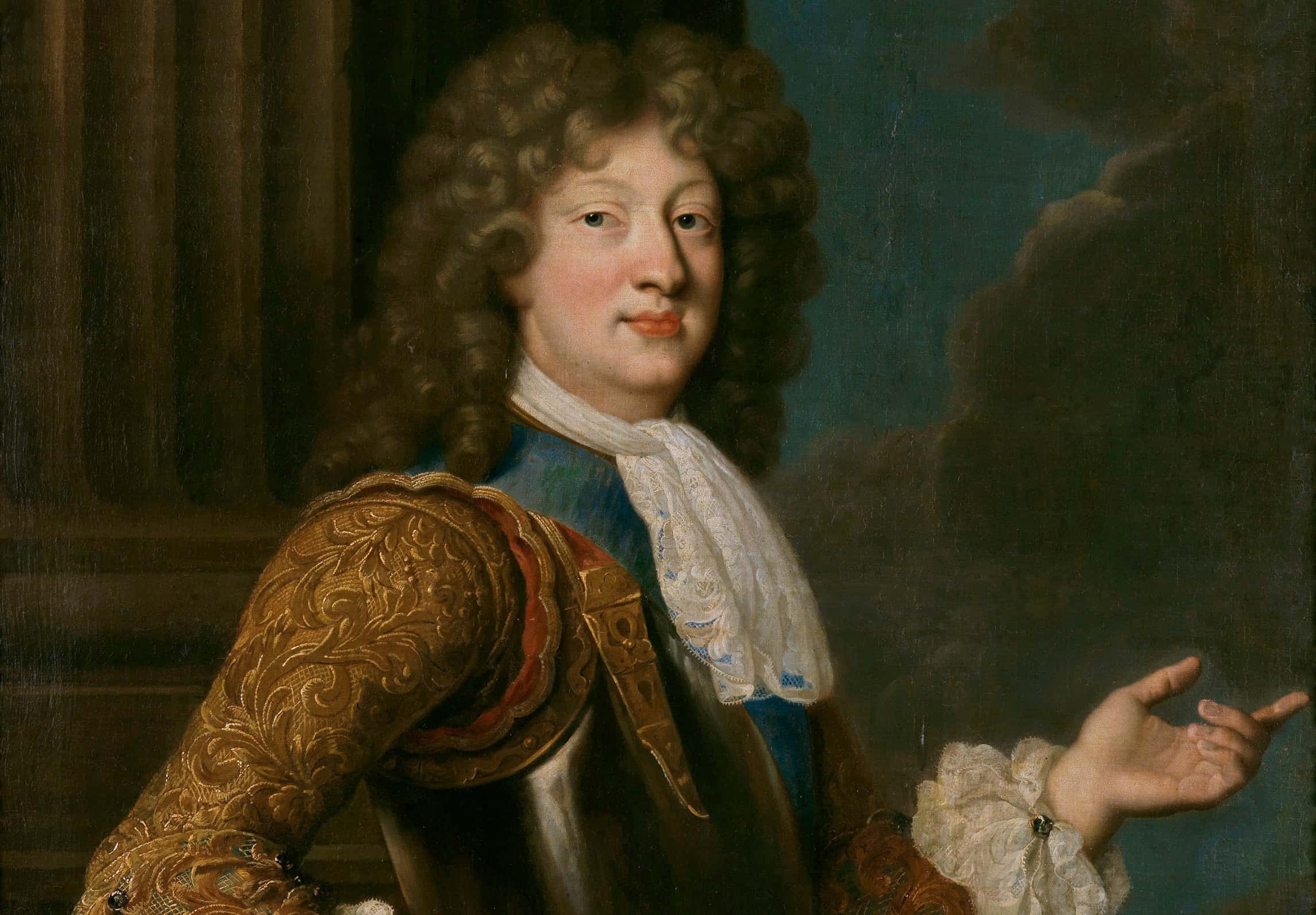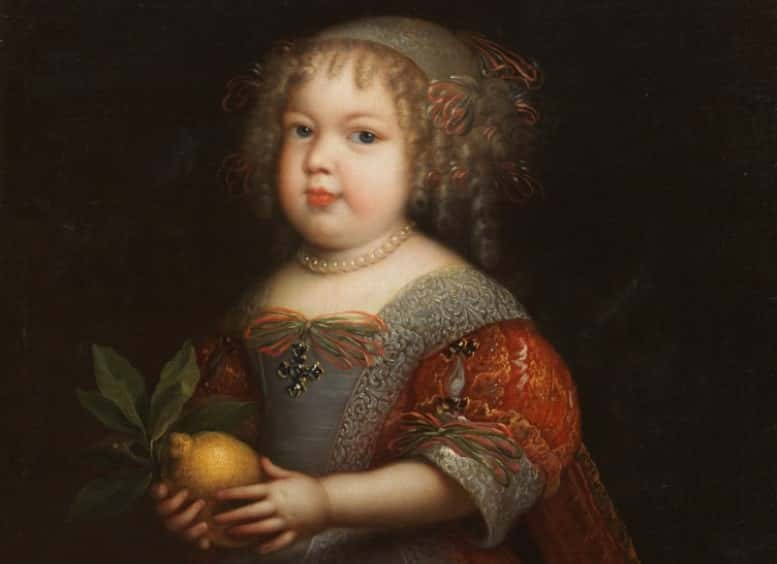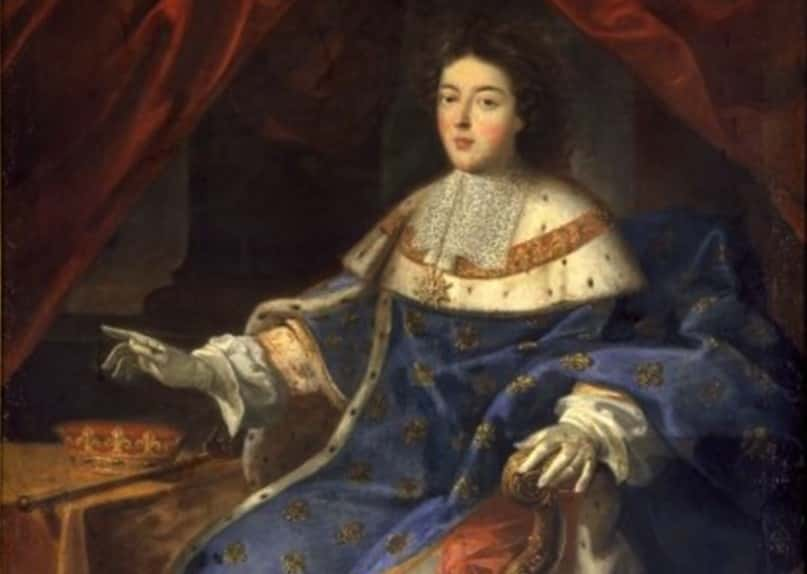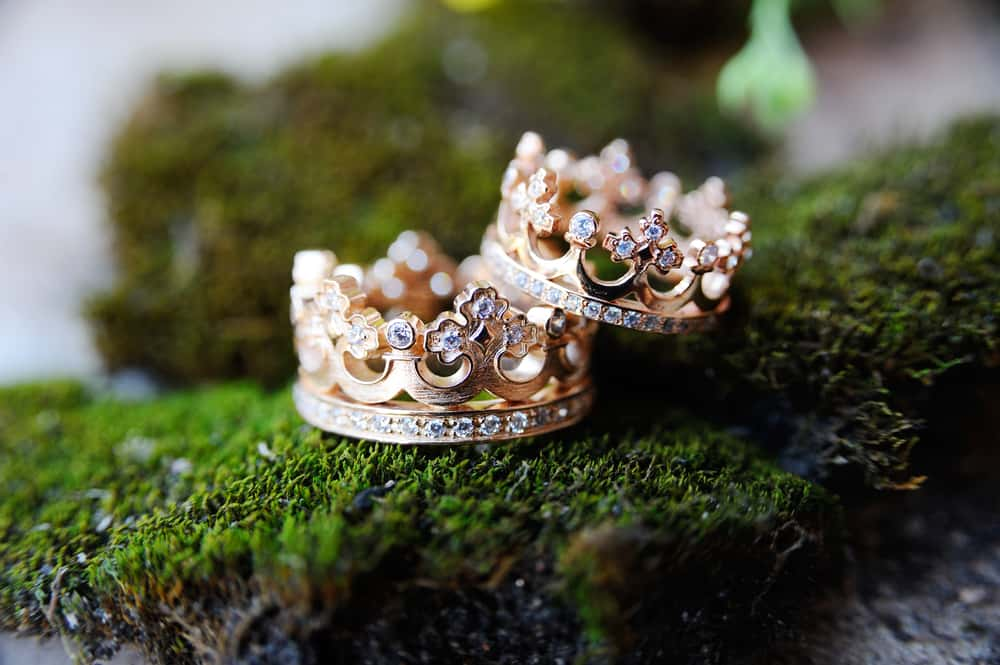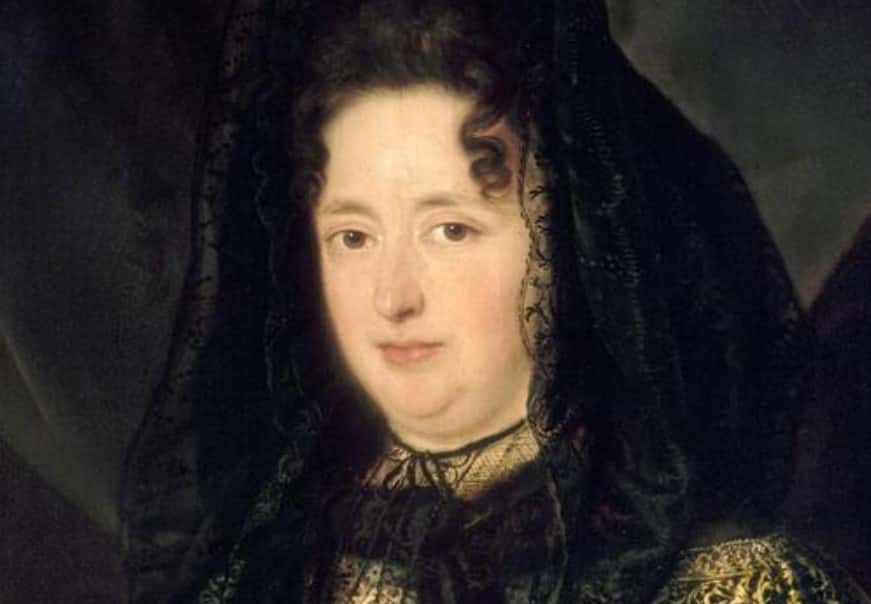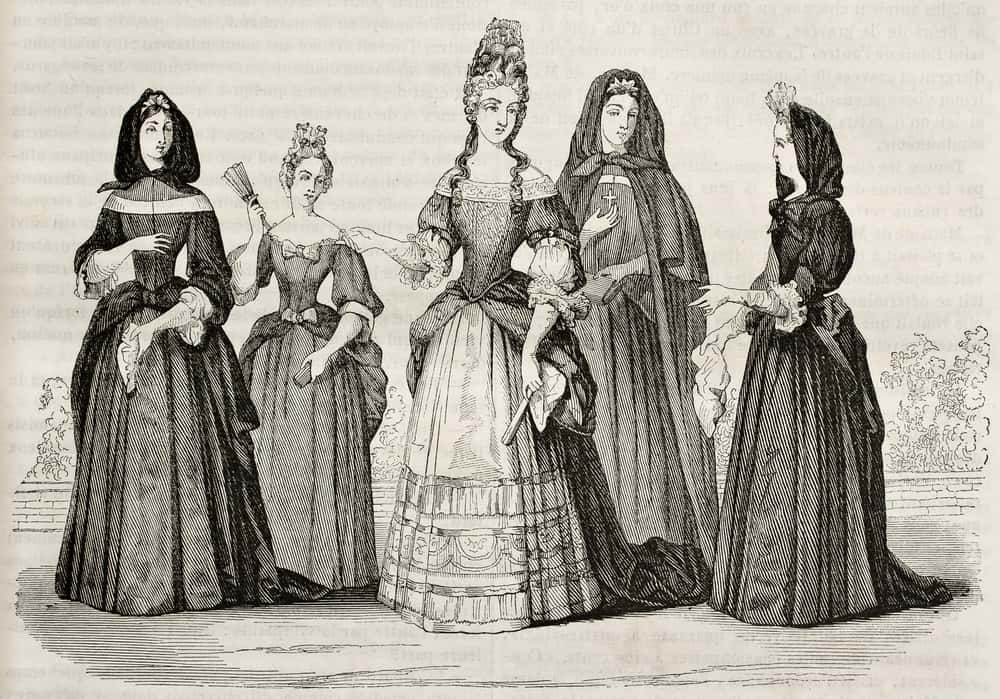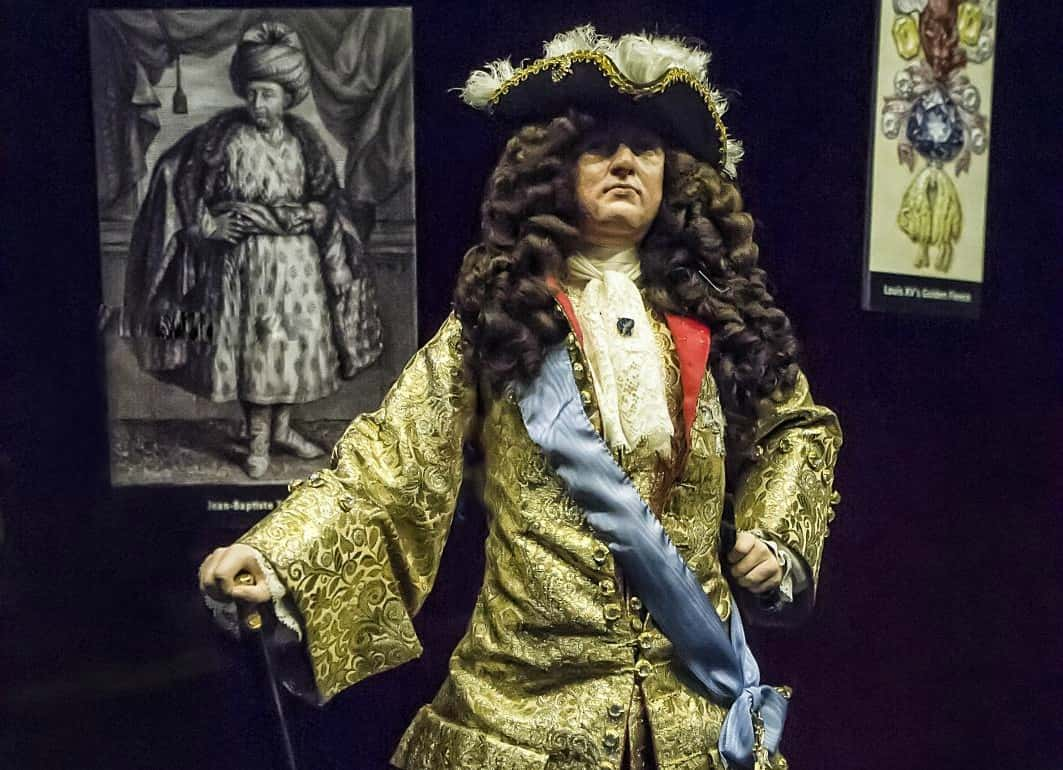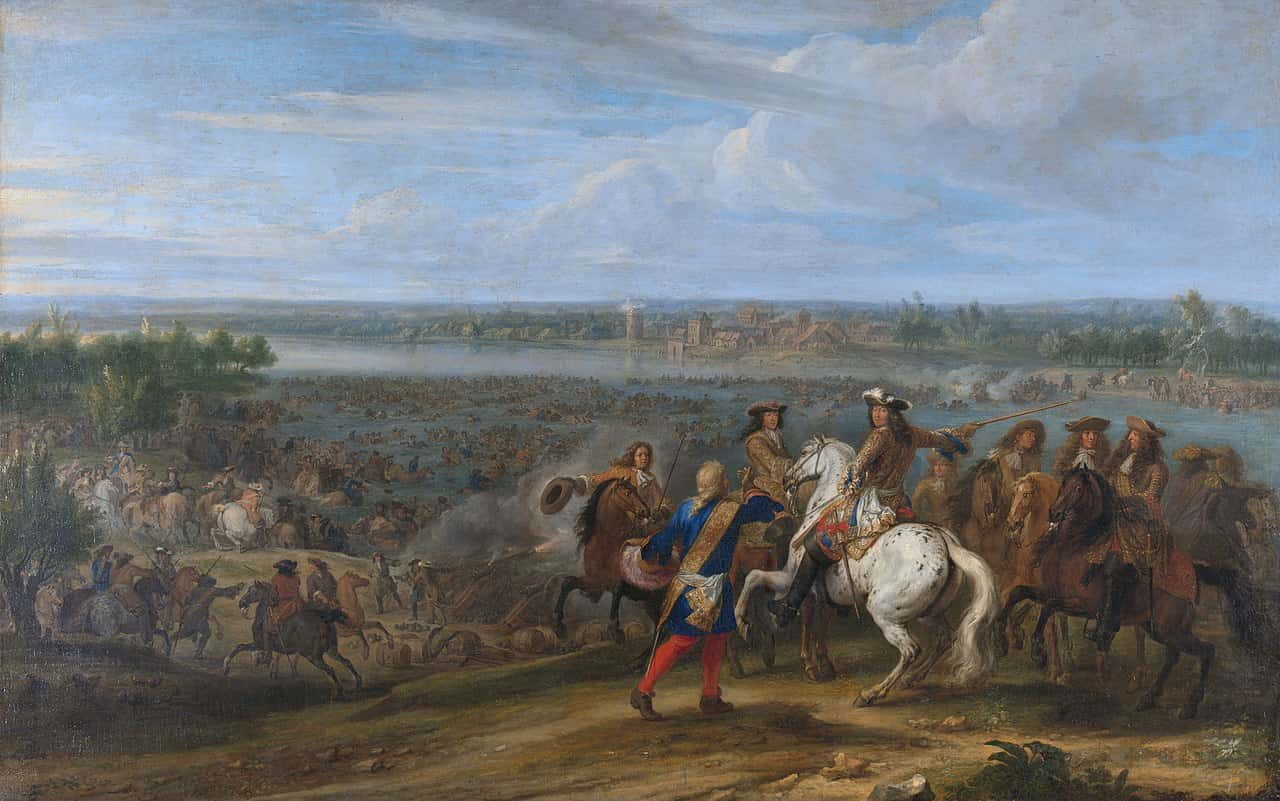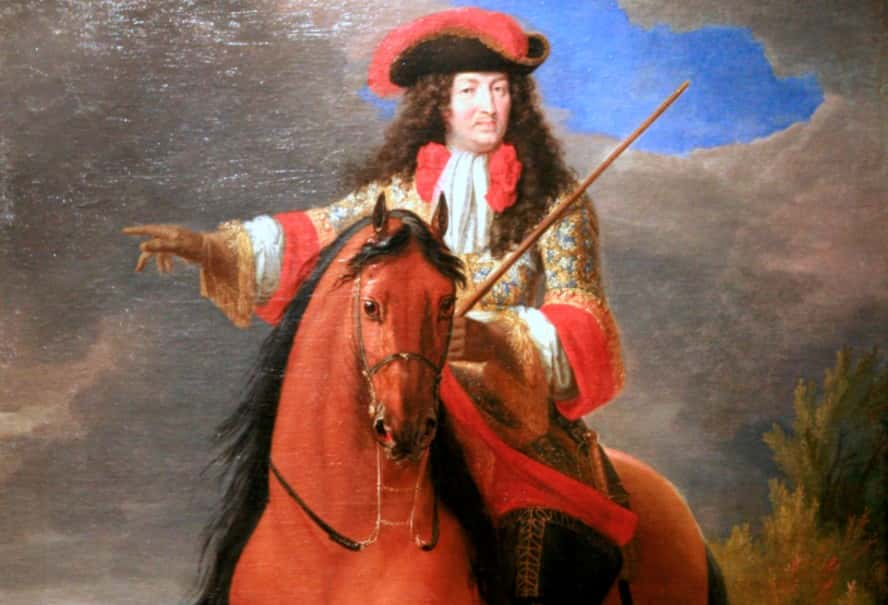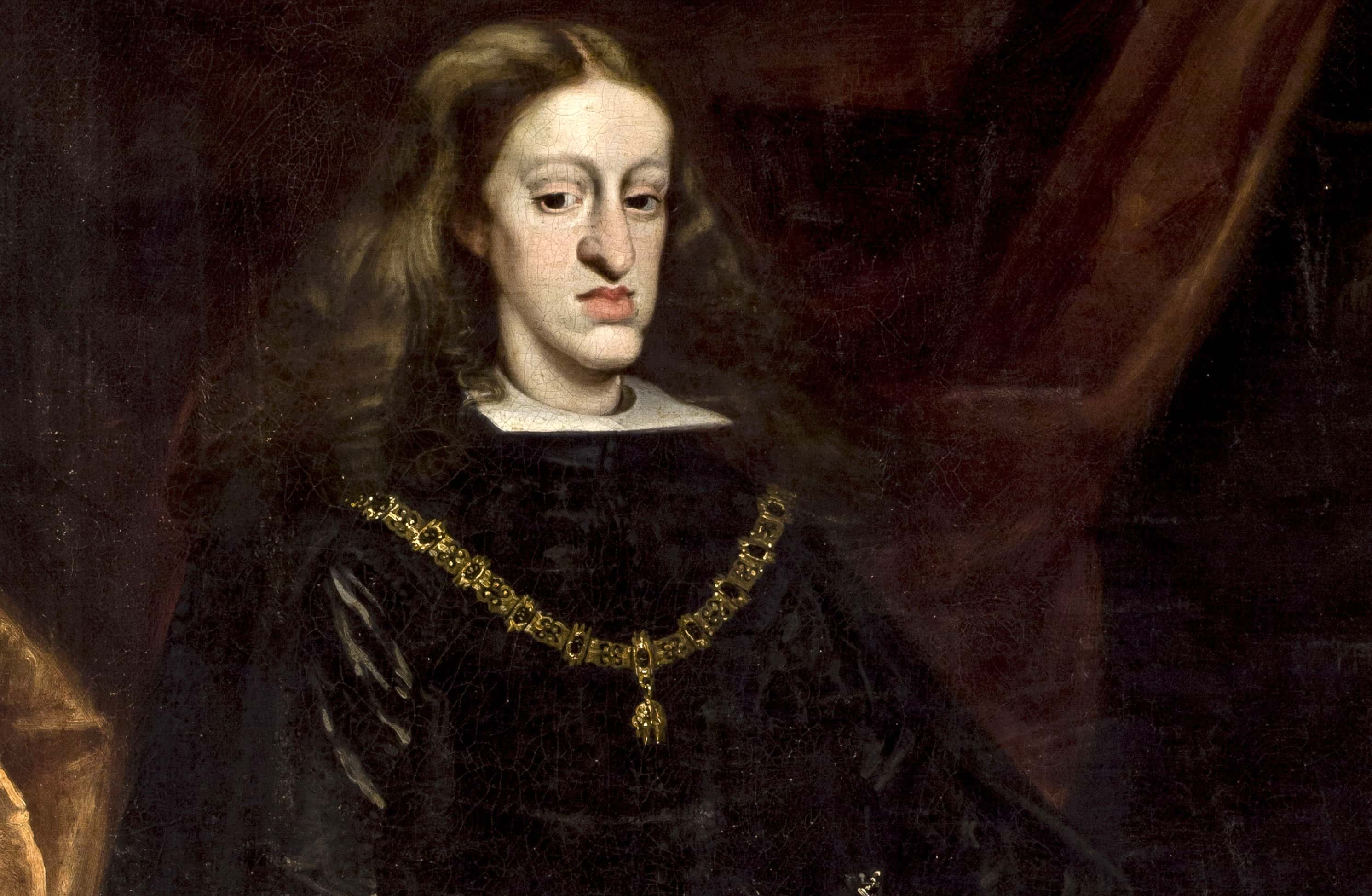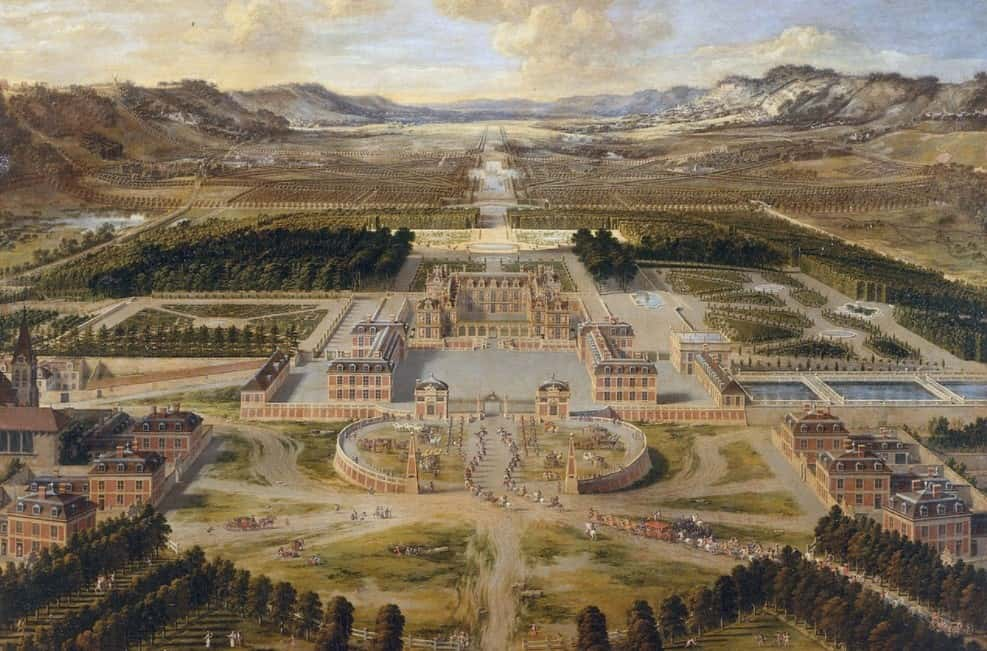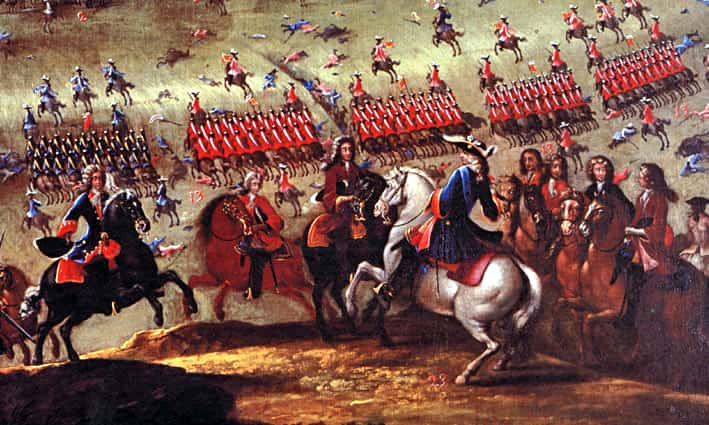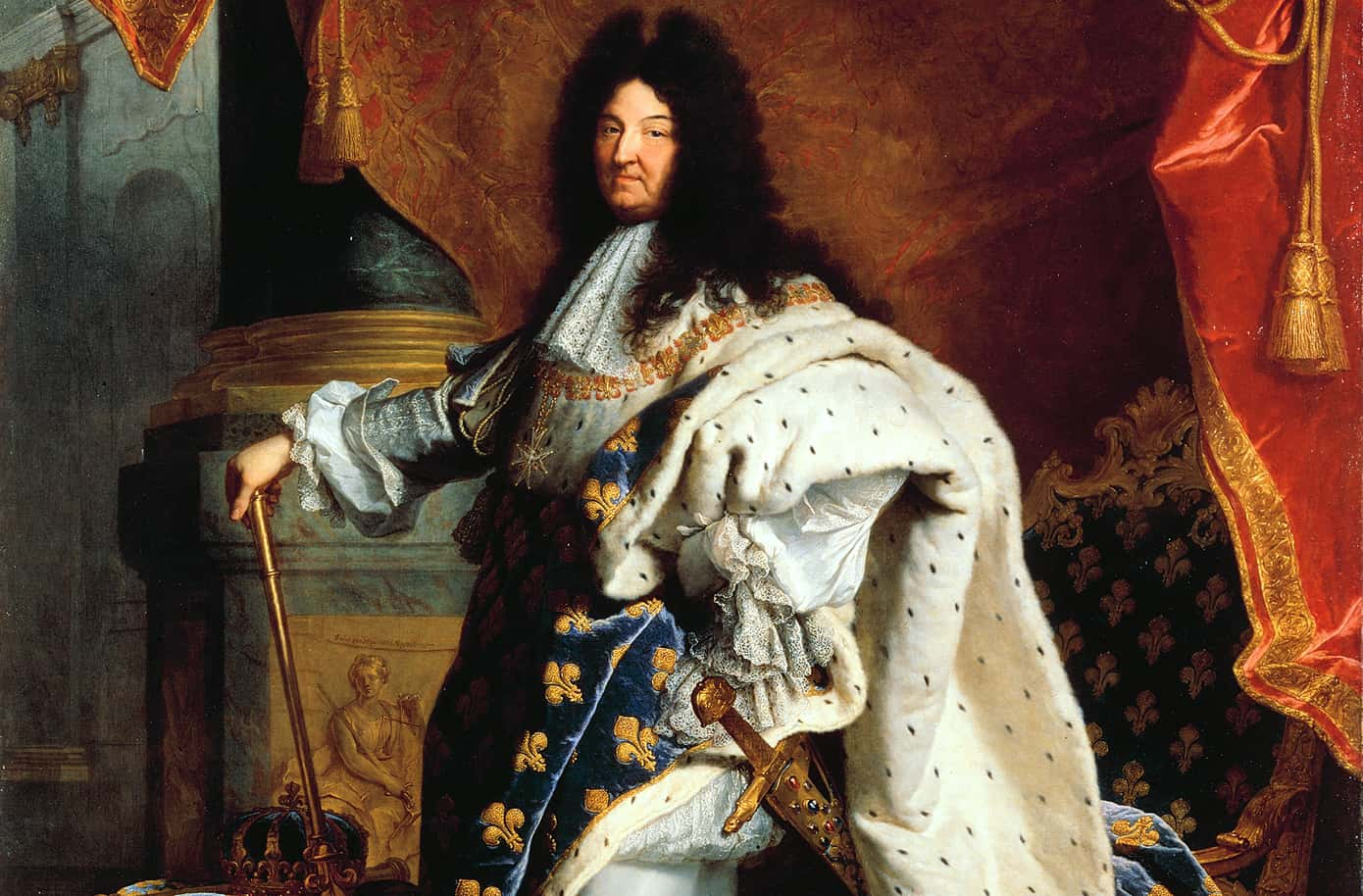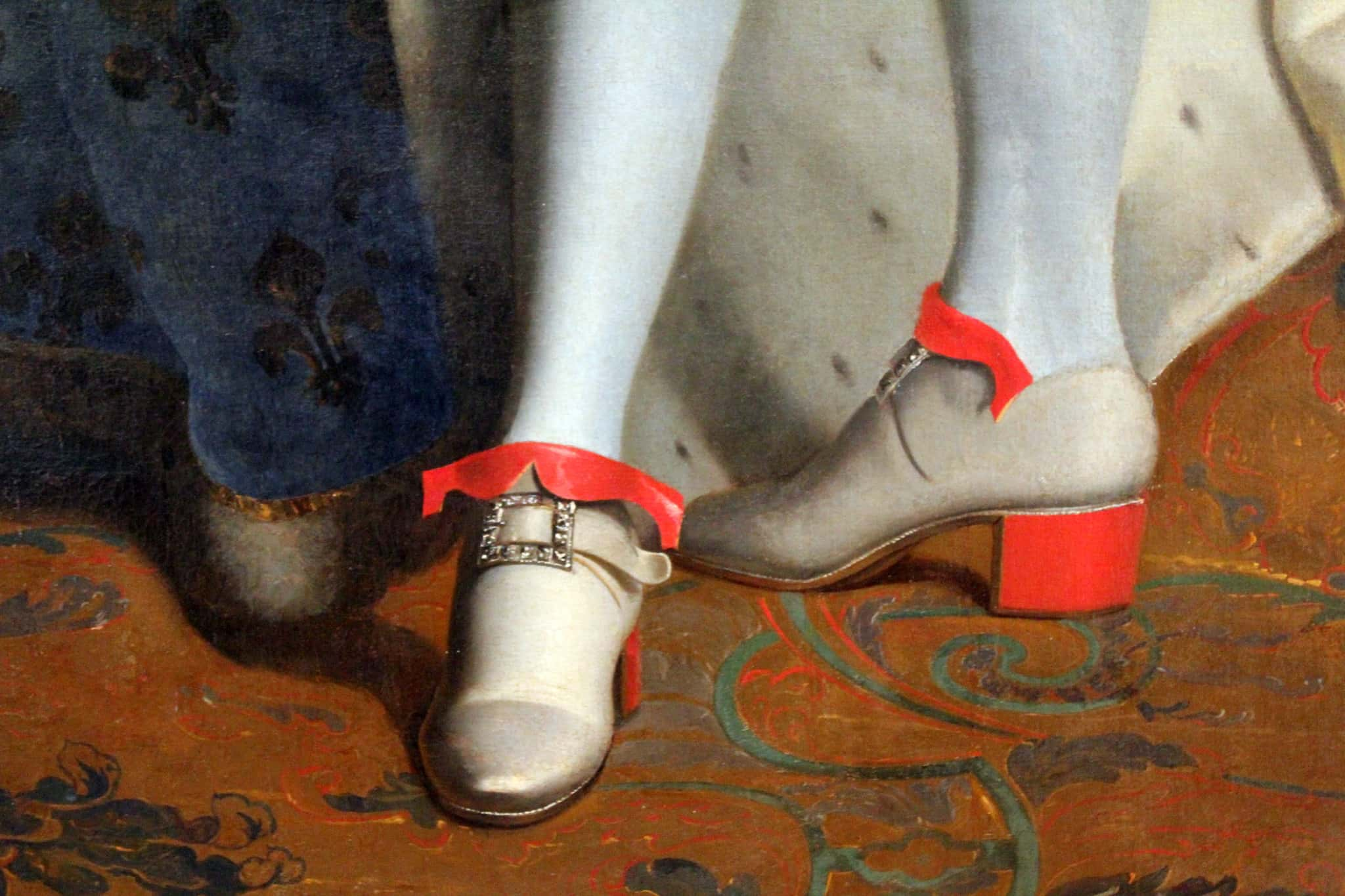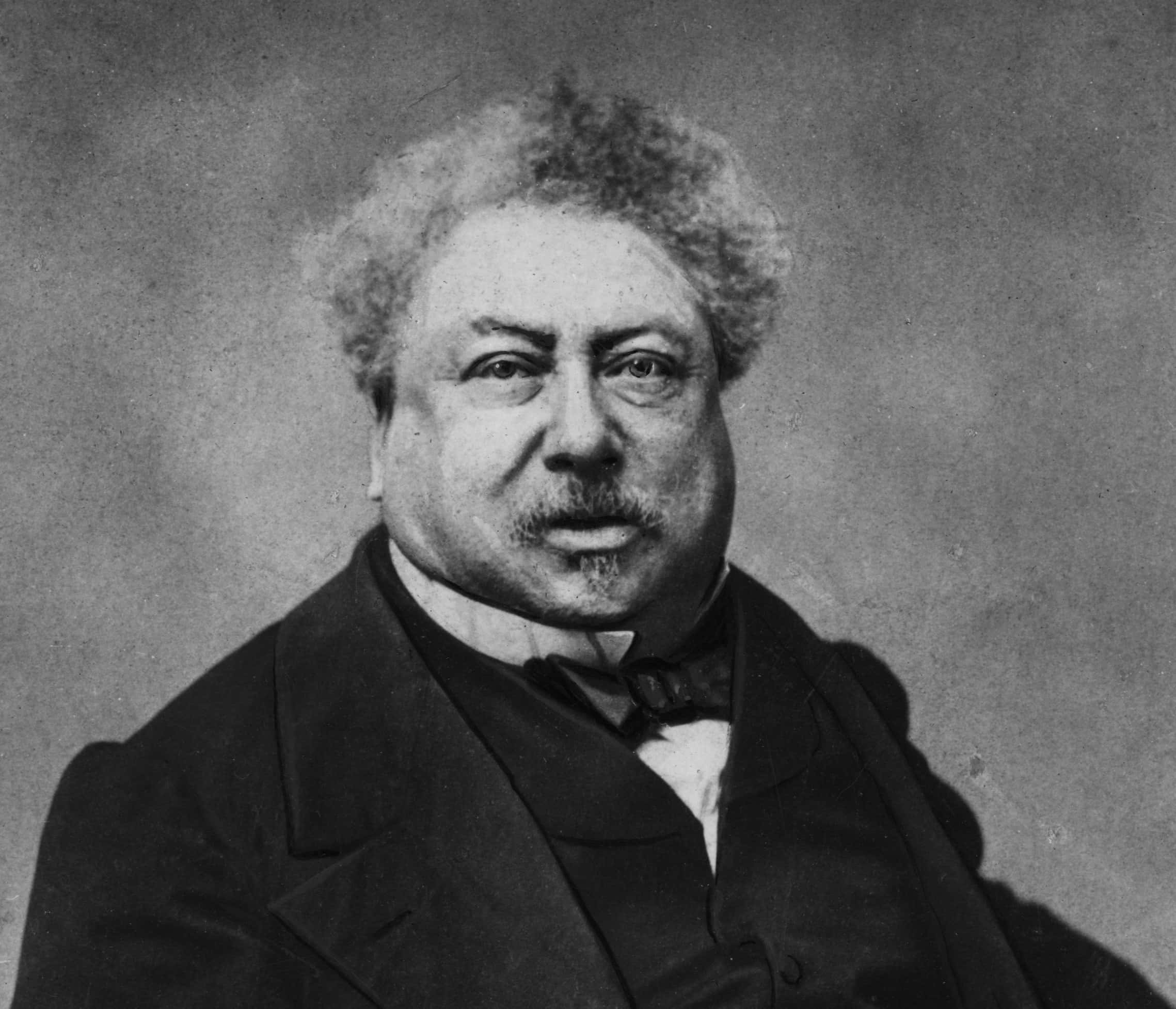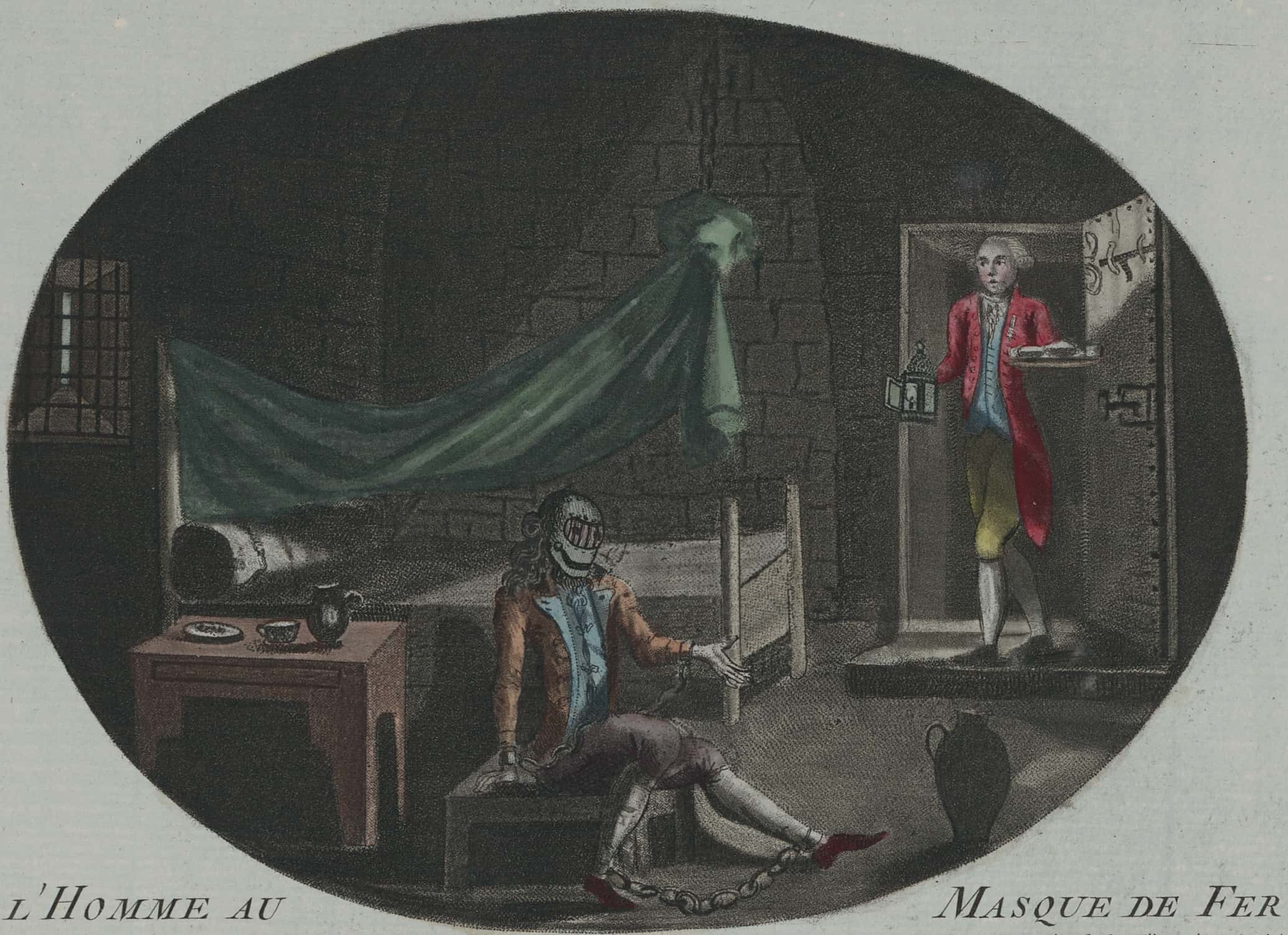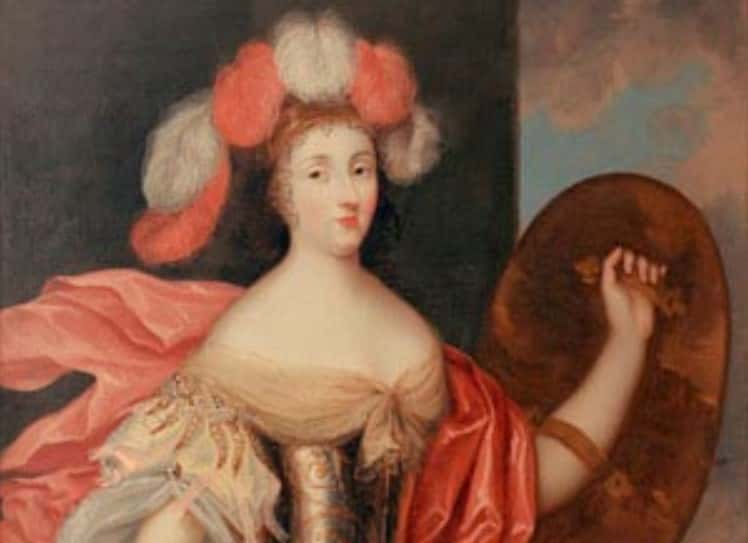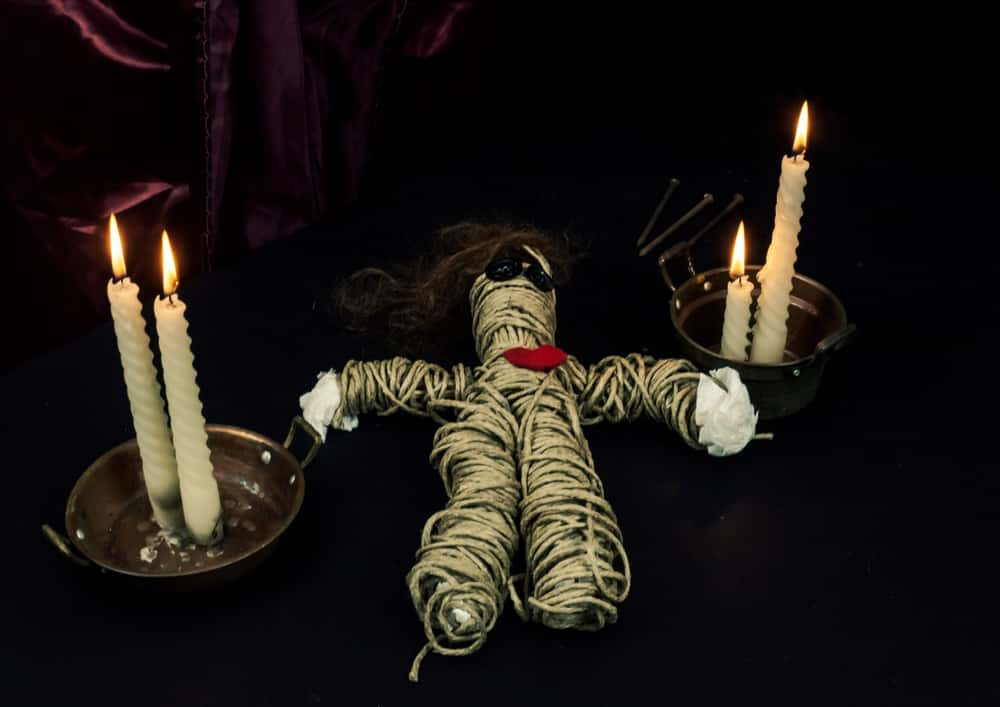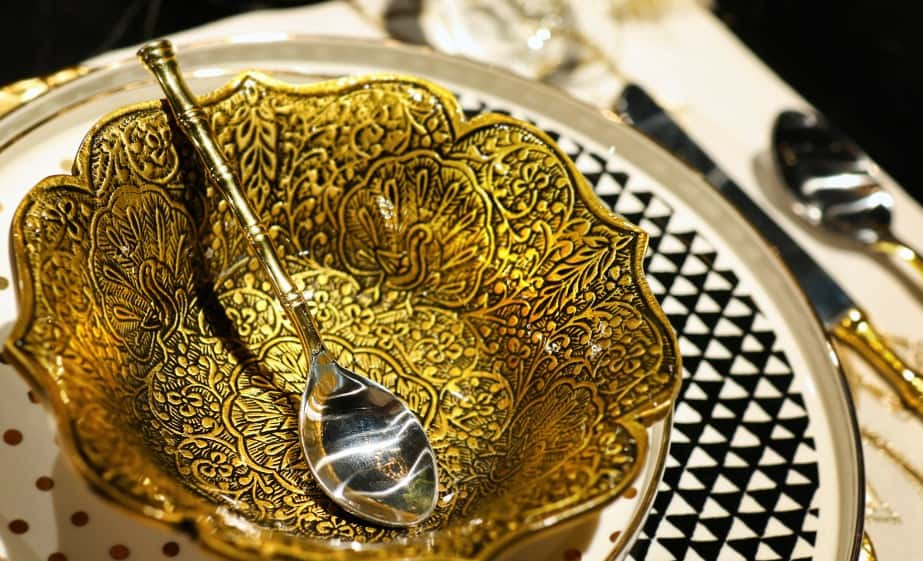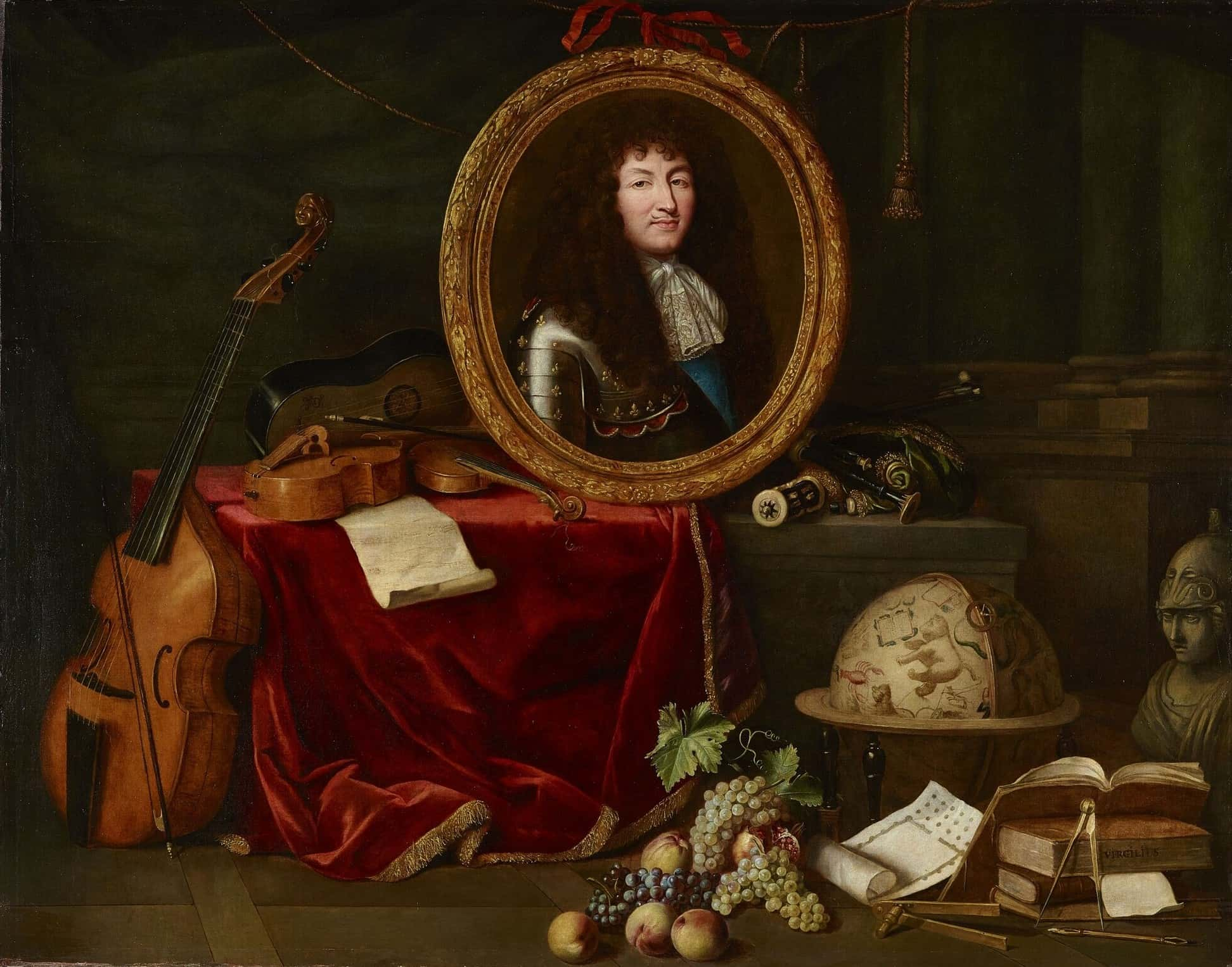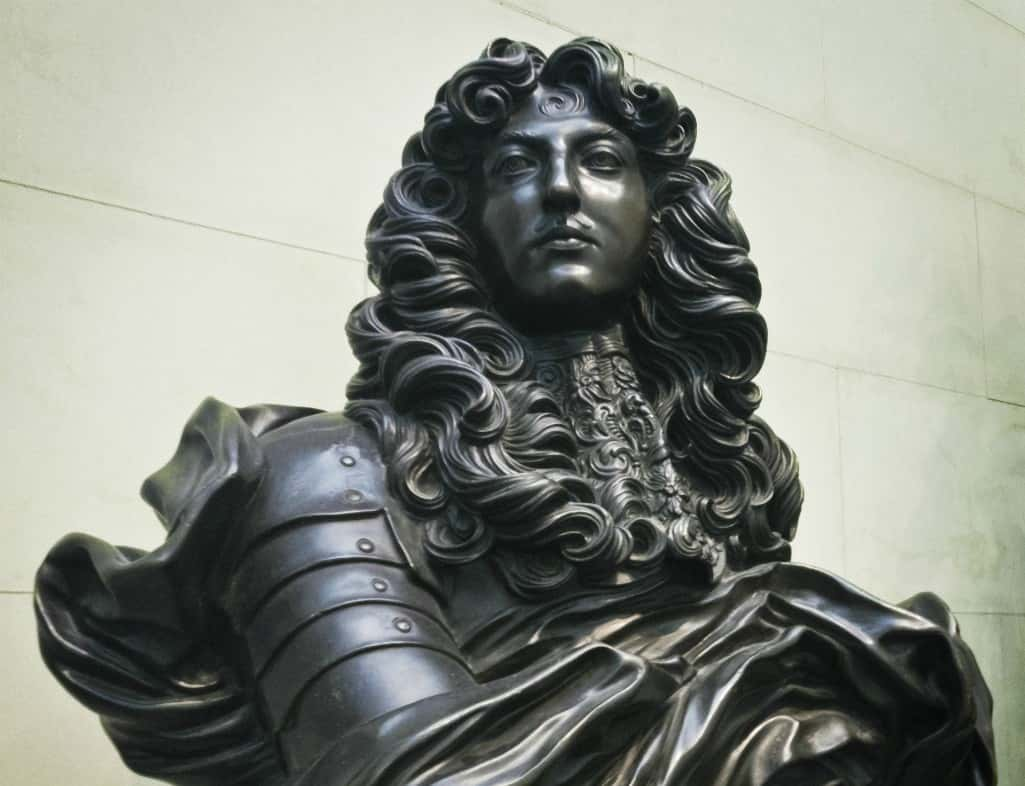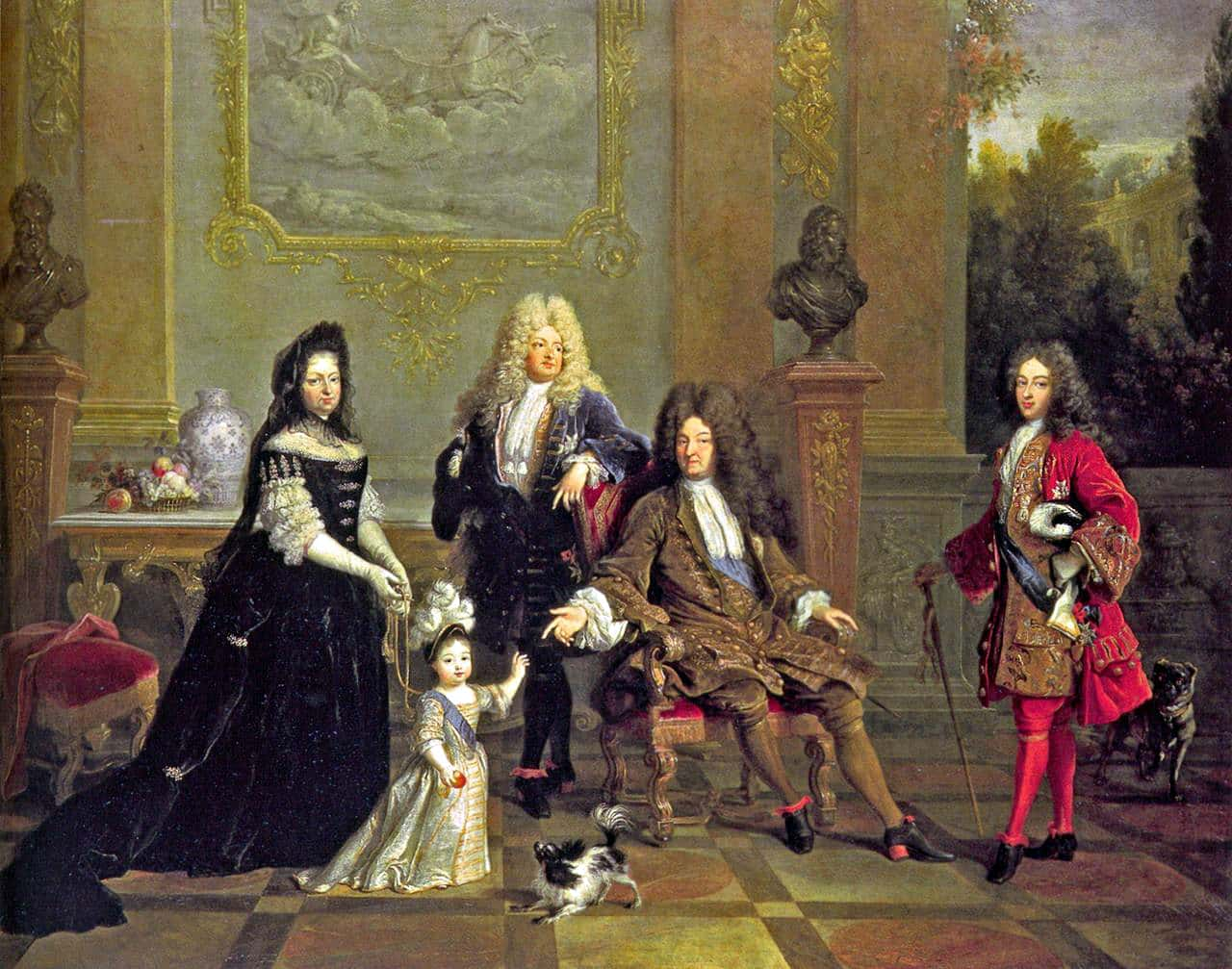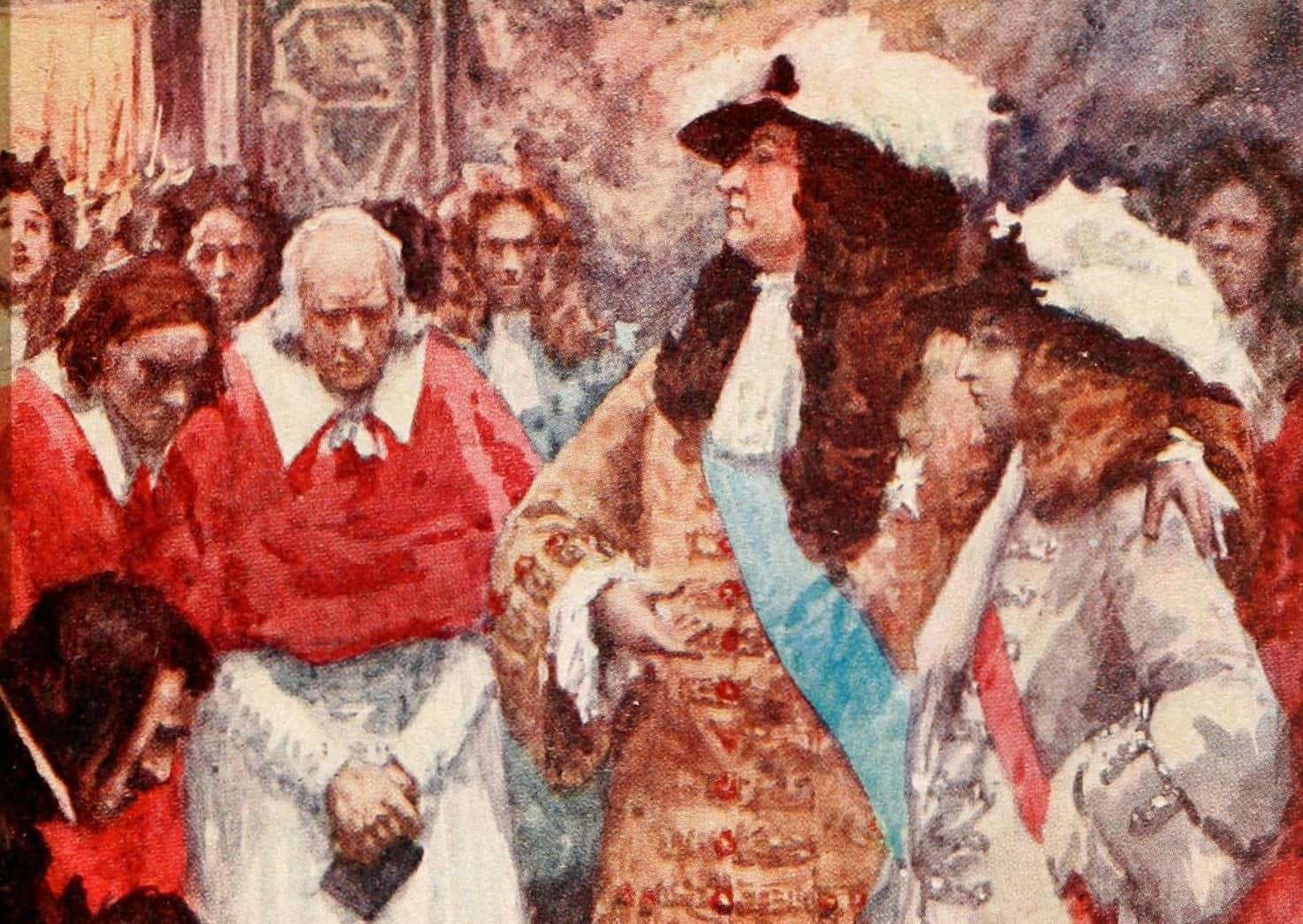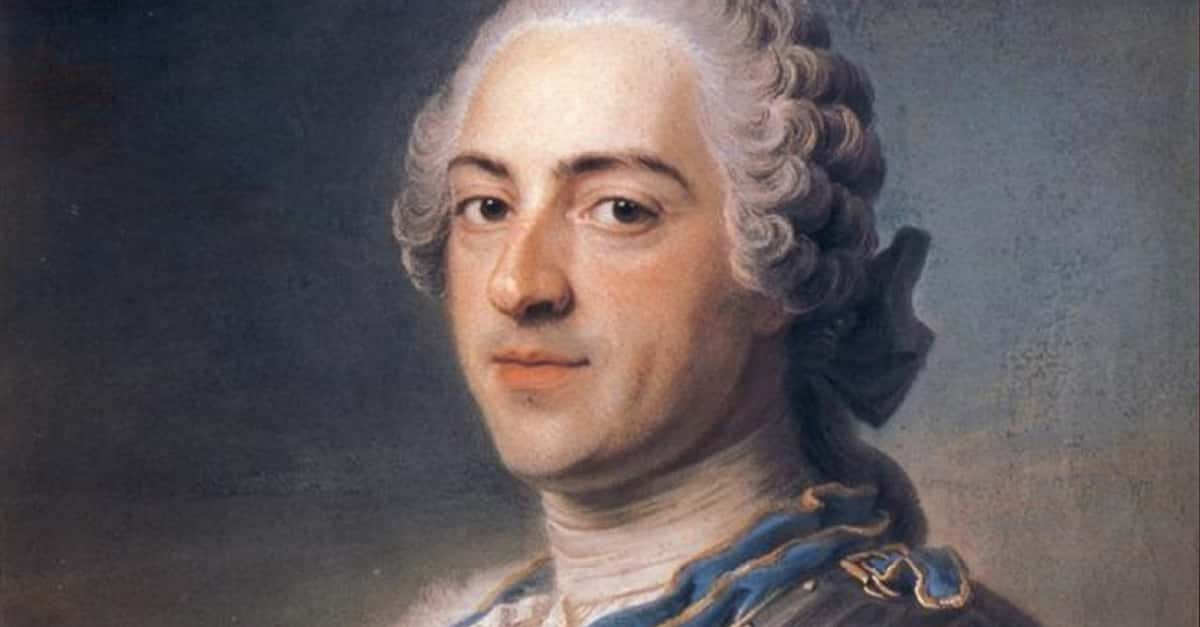Louis XIV was King of France for a whopping 72 years. As his sobriquet, “The Sun King,” suggests, Louis came to symbolize the big, bright, magnetic pomp of the French monarchy at its peak. Behind the big parties and big hairpieces, however, Louis XIV was accompanied by a dark history of intrigue, scandal, decadence, colonial violence, conflict, fashion, and more scandal. Get your high-heels ready for these decadently fun facts about Louis XIV, the Sun King of France.
1. He Was Born To Rule
You know how they say that some babies are born with a silver spoon in their mouths? Well, Louis XIV was definitely born with one of those, but he was also born with a big, golden ego. His mother, Anne of Austria, was 37 at the time, and she had suffered four stillbirths before. So, when Louis came into this world, a bright, bouncing, healthy baby boy, his parents thought: “Wow, God really thinks this kid is special.”
Louis' improbable survival inspired Anne and others to believe that God had ordained him to flourish and rule. They also gave him the name Dieudonné, meaning “God-given.” Would they pay for this hubris down the line? Oh, absolutely…
2. His Childhood Was Unusual
Well, imagine everyone’s surprise when Anne gave birth to another healthy baby boy soon after. Since Anne and her husband King Louis XIII believed Louis XIV was destined for the throne, Anne came up with a plan to ensure the brothers wouldn’t fight for it. Anne raised Louis to be the “masculine” star sibling while she raised his brother Philippe to be “feminine.”
Anne encouraged Philippe to dress in girls’ clothing and hair while pursuing the feminine arts, so Philippe would be less inclined towards the military sphere where he might threaten his big brother’s throne. Did it prevent sibling rivalry? Yes. Did it affect Philippe in other ways? You bet.
 Versailles (2015-2018), Canal+
Versailles (2015-2018), Canal+
3. His Father’s Dark End Changed Everything
Louis XIV’s birth might have been “miraculous,” but the situation he was born into was anything but. Louis XIII’s reign was an absolute catastrophe—and when this vengeful king's end came, it was utterly gruesome. In 1643, Louis XIII fell ill with a mysterious sickness. His doctors subjected him to a number of disturbing and unpleasant treatments, including bloodletting.
However, they couldn’t save him, and he succumbed to his mystery illness. Louis XIV was just five years old. Was that too young to become king? Apparently not.
4. She Had A Plan For Him
Louis XIII had foreseen his premature demise, and made plans what would happen when his son Louis XIV became king—but they also revealed a harsh truth. He did not trust his wife Anne, and he made provisions in his will to limit her power over their children. Well, he wasn’t exactly there to enforce them, so Anne got her revenge. She had Parliament annul his will, exiled a bunch of his ministers, and made herself sole Regent of France.
Was this her attempt at a power grab? Actually, no—she truly believed that God had divined Louis XIV’s right to the throne. However, this did get her in some trouble…
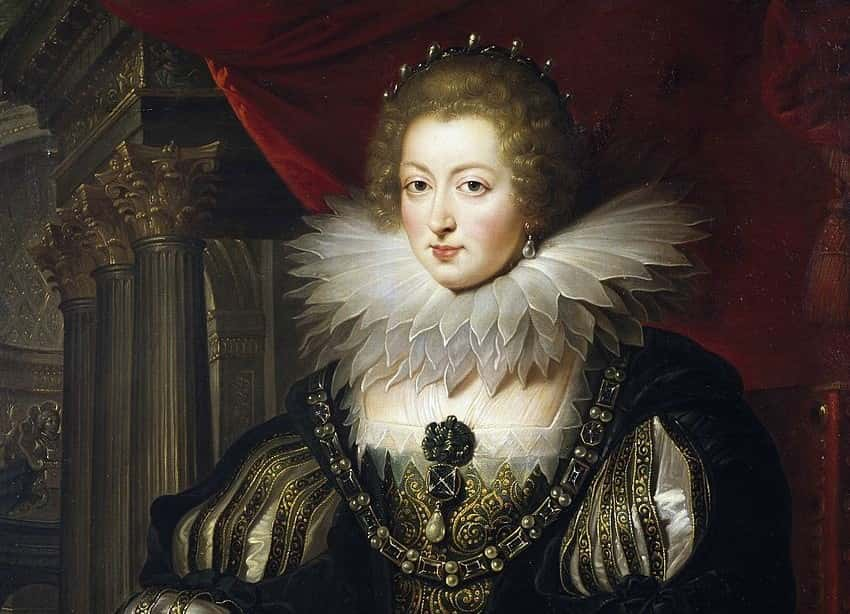 Wikimedia Commons Anne of Austria
Wikimedia Commons Anne of Austria
5. He Had A Surrogate
Anne did everything she could to set up Louis XIV for a successful reign, and she did this by choosing her allies carefully. The most important one was Cardinal Mazarin, who she made her chief minister. Mazarin became an important father figure for Louis XIV—but he might have been more of a stepfather figure, if you catch my drift. That’s right, rumors flew that Anne and Mazarin had a relationship, or even that they’d secretly wed.
Either way, Louis XIV stayed incredibly close to Mazarin during his formative years—not that it always worked out well.
6. She Wanted More For Him
As young Louis XIV’s regent, Queen Anne juggled the various factions of court. She did so at a great sacrifice to her safety, making unpopular decisions that had grave consequences for Louis XIV. As she tried to modify the law to consolidate power for her son, a number of French feudal aristocrats scrambled to stop her.
These scuffles, called the Frondes, put Anne and Louis XIV in deep peril. Rebellious soldiers once even put them under house arrest—but the danger didn’t stop there.
7. He Was In Grave Danger
As Anne continued to expand royal authority, riots broke out in Paris—and it culminated in a truly disturbing incident. Rebels stormed the palace and demanded to see the King. They entered the royal bedchamber, where a terrified Louis pretended to be asleep. Luckily, this was enough for them, and they left. The episode forced Anne and Louis to flee Paris, fearing for their lives.
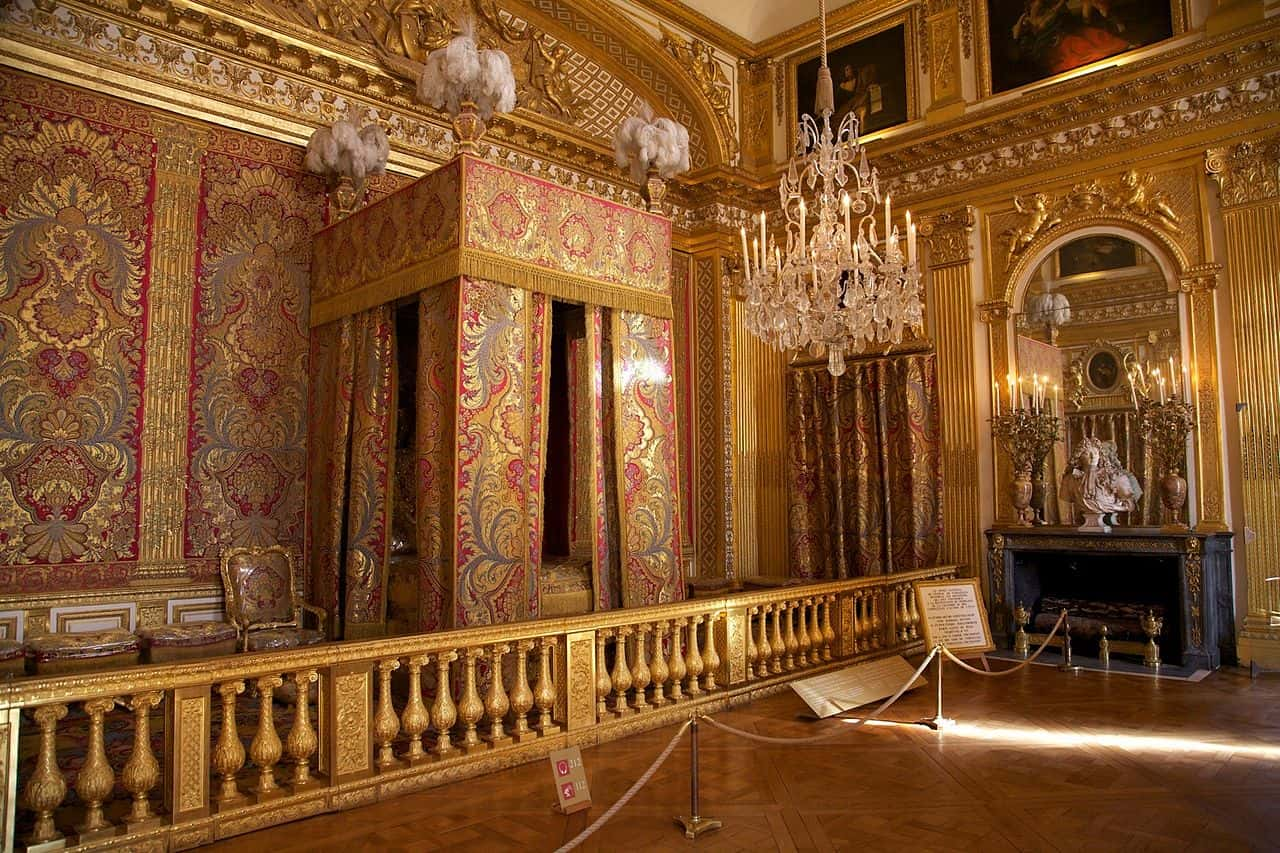 Wikimedia Commons, Jean-Marie Hullot
Wikimedia Commons, Jean-Marie Hullot
8. Terror Inspired His Reign
While they eventually returned, the next chapter in the Frondes left Mazarin exiled and saw Anne and Louis XIV living under house arrest. Witnessing the terror that rebellions could cause had a dire effect on the young king. Not only did it cause a premature end to his previously carefree childhood, it also instilled a deep hatred of the Paris court and its aristocracy—and this would change everything about his rule.
9. He Fell In Love
The rebellions weren’t the only things that deeply inspired Louis XIV and changed the course of his life during this time. In 1650, some members of Cardinal Mazarin’s family came to the French court, and Louis met his first love. Her name was Marie Mancini, and she was Mazarin’s niece. He fell hard, and expected to eventually marry her—but of course, his mother had other plans.
10. They Tried To Make Him Turn Against Her
The rebels began to claim that they were actually working in Louis XIV’s interest against his power-hungry mother. This kind of court intrigue might have worked on someone else, but not with Louis, who remained close to Anne. It all became moot anyway, as Louis reached the age of majority in 1651, shortly after his 13th birthday.
Mazarin returned from his exile, and Louis put him in charge of foreign and financial policy. Anne, surprisingly, stepped back as regent and allowed her son to rule on his own…mostly.
11. She Used Him As A Pawn
That didn’t mean she completely cut those puppet strings. France had been in a bloody and brutal conflict with Spain since before Louis XIV’s birth. By the time he became king, both sides were exhausted. Oh, did we mention that Anne was the King of Spain’s sister? Yes, despite the misleading name “Anne of Austria,” she was actually a daughter of Spain.
Now that her son had his full range of power as King of France, she set her sights on achieving peace with Spain—and, of course, she had quite the plan for it.
12. She Pulled The Puppet Strings
Louis XIV was not getting over his teenaged infatuation with Marie Mancini, the niece of his minister Cardinal Mazarin. One could imagine Mazarin pushing them together to solidify his relationship with Anne and his place in the court—but nope, he was completely beholden to Anne’s machinations. Anne wanted Louis XIV to marry her brother’s daughter, so she came up with a devastating plan.
13. They Sent Her Away
Anne conspired with Cardinal Mazarin and in 1661, they made Louis XIV’s worst nightmare come true. They exiled Marie Mancini to Italy and arranged for her to wed a prince there. Then, Anne began to plan for his wedding to Maria Theresa, the Spanish King’s daughter. Did this start their marriage off on the wrong foot? You bet.
There’s no way that losing his first love didn’t inspire a little resentment in Louis XIV toward Maria Theresa, and that became glaringly obvious throughout their marriage.
14. Their Wedding Was A Spectacle
To our modern eyes, Louis XIV’s wedding to Maria Theresa would be considered utterly bizarre. First, there was a marriage by proxy in Spain to seal the deal, where a proxy stood in for the groom beside Maria Theresa. Then, her family transported her to the border, where the French royals picked her up. A lavish ceremony in France followed, with a plan for the traditional public consummation.
That’s right, tradition dictated that Louis XIV and Maria Theresa would consummate their marriage in front of an audience. Luckily for both of them, his mother arranged for it to take place in private instead. That was about as much luck as Maria Theresa got…
15. He Couldn’t Stay Faithful
The arrangements for the marriage went through, and the long conflict between France and Spain was over—but the one at home was just beginning. When he tied the knot with Maria Theresa, Louis XIV vowed that he would never be apart from her. It was a vow that lasted about a year. Louis XIV became an absolutely prolific ladies’ man and from 1661 on, was rarely if ever without a mistress. However, Louis XIV’s queen had an ace in the hole.
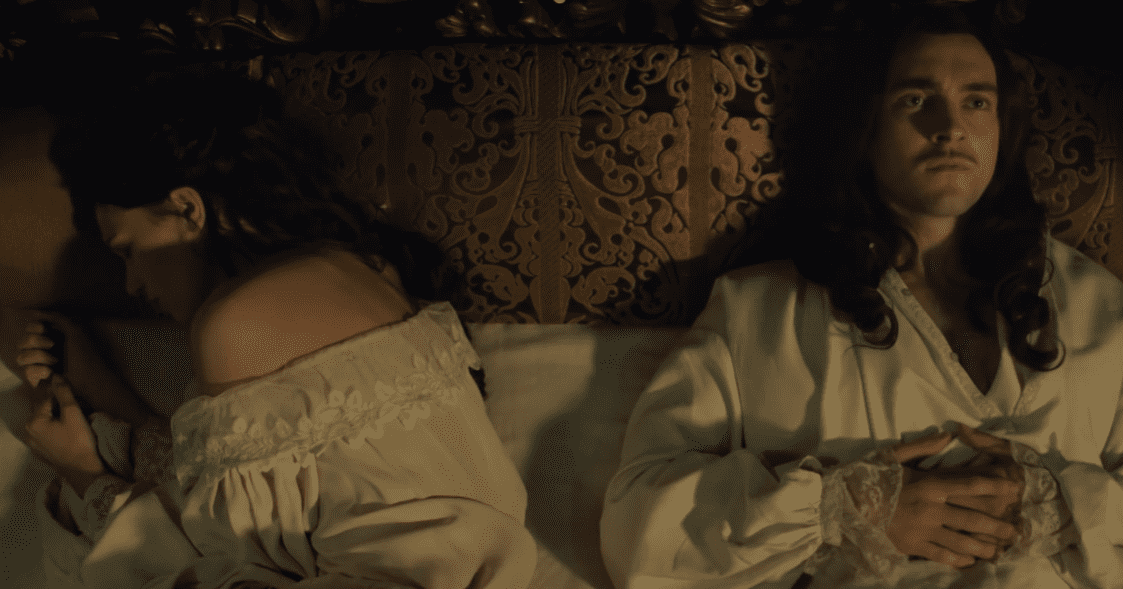 Versailles (2015-2018), Canal+
Versailles (2015-2018), Canal+
16. She Had An Advantage
It was rare for a queen coming from a foreign land to have her mother-in-law on her side—but Anne took to Maria Theresa immediately. After all, Anne had experience as a French queen whose husband kept mistresses. On top of that—lest we forget—she was also Maria Theresa’s aunt. This meant that Louis XIV had to stay on his toes.
17. He Was Fruitful
Well, he tried to keep his affairs out of the court, but that didn’t mean he kept it in his pants. Louis XIV was both a prolific lover and a prolific progenitor. Historians estimate that the man had roughly 22 children (including the legitimate ones) by different women over the years. His first child was born to a palace gardener, but soon after that, his tastes in women became a little more highbrow.
He began a long-term affair with Louise de La Valliere, one of the ladies-in-waiting who served his brother’s wife. But it wasn’t just Louis XIV’s libido that had led him to her…
18. People Thought They Were Together
See, Louis XIV’s brother had also recently tied the knot to a woman named Henrietta of England. But when they entered the royal court, people saw how well the King got along with Henrietta, and rumors began to spread. In order to counter them, Louis and Henrietta came up with a devious plan. She presented three of her ladies-in-waiting to him, and he would pick one to flirt with at court in order to take the heat off. Can you guess who he picked?
19. It Backfired
Obviously, Louis and Henrietta’s plan worked a little too well, and he fell for Louise de La Valliere. She was talented and smart, but most importantly, she seemed to like him for him, not for his money and power. His marriage had been so politically motivated, it made sense that he was looking for something a little more romantic. It’s pretty wild that he had time to juggle two women, considering what was happening in the court at the time…
20. He Didn’t Answer To Anyone
In 1661, Louis XIV’s longtime minister and father figure Cardinal Mazarin passed on. What Louis did next shocked everyone. Louis had spent his formative years watching as ministers and other members of the Parlement de Paris squabbled and tried to wrest control from his family. To him, Mazarin had been the exception to the rule, and he wasn’t taking any chances.
He announced that he would rule without a chief minister, which was basically unheard of. Every government secretary and minister would answer to the king, and the king only. It was just a question of whether the people would accept this unconventional decision…
21. His Punishments Were Brutal
After years of instability, people did actually seem to want a decisive and powerful ruler. Still, Louis XIV wanted to prove himself in a concrete way. Many suspected that his Superintendent of Finances was skimming money off the top to pay for a lavish lifestyle, so Louis and his allies watched and waited. When they had enough evidence, they had him arrested for embezzlement.
The punishment was traditionally exile, but he changed the man’s sentence to life in prison. Louis XIV was sending a message to anyone who would contemplate betraying him—and it was received loud and clear.
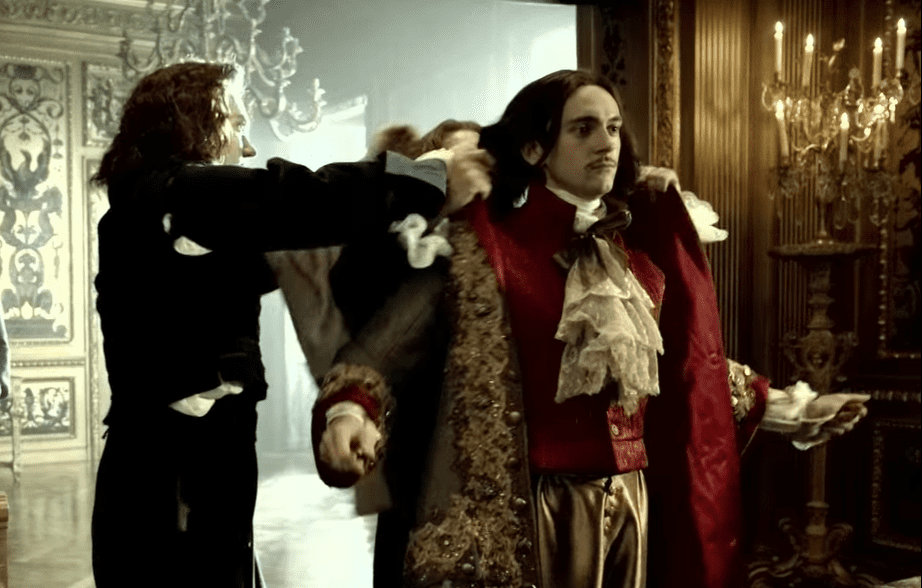 Versailles (2015-2018), Canal+
Versailles (2015-2018), Canal+
22. He Had An Heir
He may have been stepping out on his wife, but Louis XIV was still performing his husband-ly duties—and we don’t mean taking out the trash. Maria Theresa became pregnant in 1661 and gave birth to a son in November of that year, fulfilling every newlywed king’s dream. They named the brand new heir to the throne Louis, because of course.
With that under his belt, Louis XIV went back to being very indifferent about his home life. After all, he had other problems on his hands.
23. He Was The Great Reformer
Louis XIV actually had to work pretty hard to clean up the mess his father had made as king. Finances had always been a problem, and he made reforms to get his country out of a deficit. He also fixed up the French armed forces and oversaw projects to boost commerce and trade. Overall, he was pretty much everything you’d want from a king, and was doing a great job as ruler—but behind the scenes, he remained pretty, pretty messy.
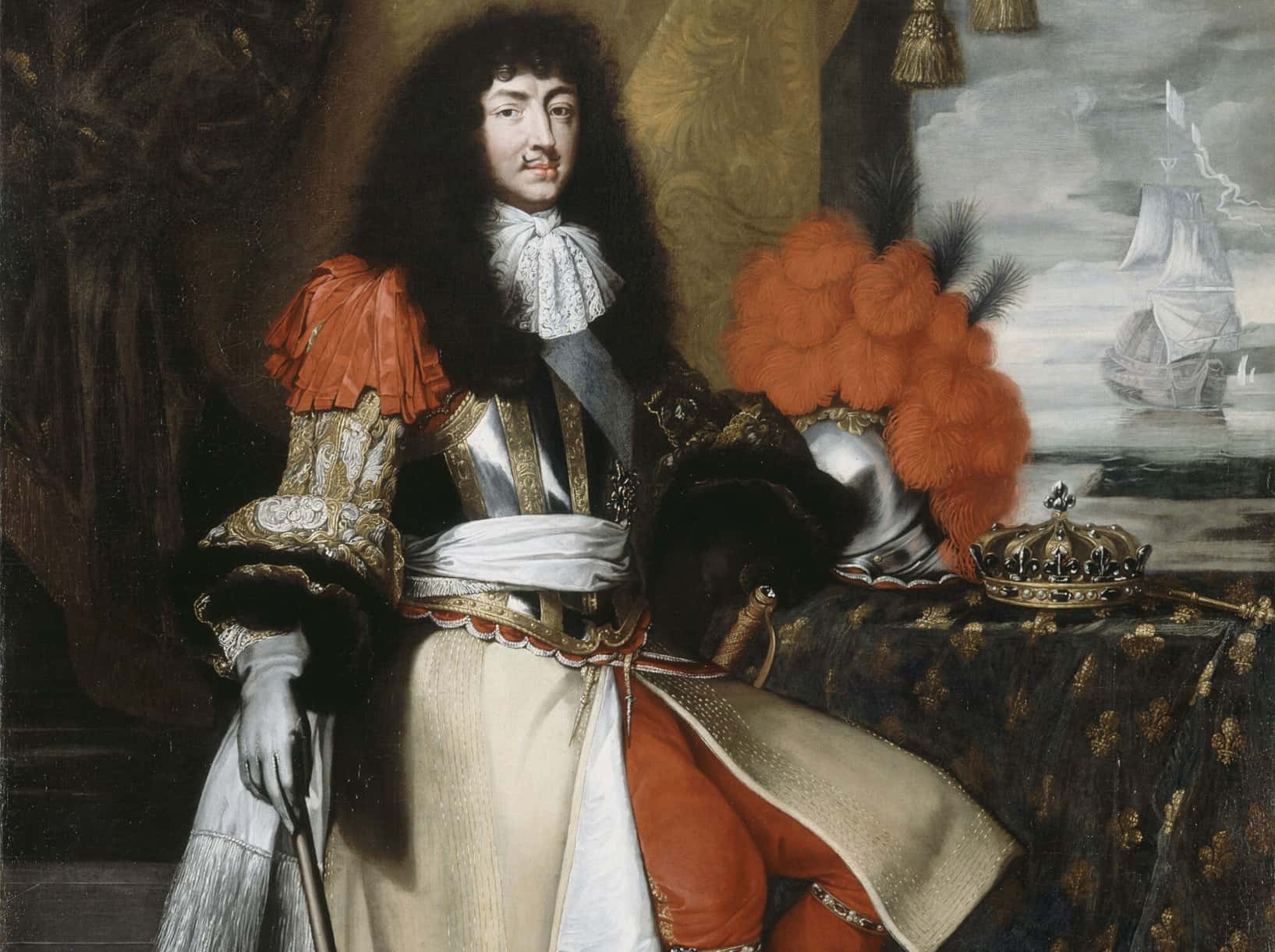 Wikimedia Commons
Wikimedia Commons
24. It Was A Rumor Mill
It wasn’t all his fault—Louis XIV was surrounded by messy people. The court intrigue was out of control. His affair with Louise de La Valliere was an open secret, but he wasn’t the only one stepping out. There were rumors his sister-in-law was cheating on his brother, so he interrogated Louise about it. She refused to tell on her friend, and to make matters worse, a local bishop began to roast the lovers for their sins in one of his sermons.
Louise was horrified, and she fled to a convent.
25. She Tried To Leave Him
Louis XIV convinced her to come back, but if she knew what she was walking into, she probably would’ve stayed away. Despite the fact that Louise seemed relatively innocuous as a person and disinterested in court intrigue, she’d made some powerful enemies. When she followed Louis XIV back to court, one of them tried to plot her comeuppance, and expose the affair to Queen Maria Theresa. Spoiler alert: it didn’t really go as planned.
26. His Wife Was Checked Out
Despite the fact that bishops were making sermons about Louis XIV’s affair with Louise de La Valliere, Maria Theresa remained blissfully unaware that her husband was cheating. Or at least, pretended to be blissfully unaware. In fact, Maria Theresa seemed kind of blissfully unaware of…everything that happened around her.
Other than occasionally getting pregnant, Louis XIV’s wife was absolutely disinterested in any of the duties normally expected of a queen. She most just preferred to play cards and gamble with friends, which was fine with Louis XIV. After all, he had other issues to tend to.
27. He Was Authoritarian
Louis XIV might have been a king of large, sweeping reforms that pleased his subjects greatly—but these also had a chilling dark side. He sanctioned slavery; expanded French colonialism in Africa, the Americas, and Asia; and took concrete steps to persecute Protestants in France. Also, now that he’d stabilized France’s financial situation, he decided it was time for expansion—by any means necessary.
28. He Took What He Thought Was His
As if things weren’t chilly enough with his wife in the romantic sense, there was also the fact that her family had never paid her dowry to him. When his wife’s father passed on and she mourned, Louis XIV was busy reading the fine print of their marriage contract. As a result of the unpaid dowry, he seized Spanish territory and made sure one of his own family members would end up as heir to the Spanish throne. Geez, when I’m late on a payment I usually just get a fee of a few bucks…
29. He Lost Many Children
Throughout the early part of the 1660s, Louis XIV juggled his marriage with his wife and his affair with Louise de La Valliere and grew his families with both women. Sadly, each was struck by tragedy after tragedy. He had two daughters with Maria Theresa, but each only lived for about a month after birth. At the same time, he had three sons with de La Valliere, each of whom only lived for about a year.
It was a terribly heartbreaking streak of bad luck—and more was on its way.
30. He Let His Freak Flag Fly
After the loss of her ally/suspected secret husband Cardinal Mazarin, Louis XIV’s mother Anne had retired to a convent in Paris. She stayed there until her passing in 1666—and her son’s reaction to her loss was, um, unconventional. He had always been respectful enough to not bring his mistress Louise de la Valliere around Anne or his wife Maria Theresa.
When Anne passed, that went out the window. Louis waited just a week to start bringing Louise to mass alongside his wife. Louise was a devout Catholic who was in it for love, not to be the most popular at court, and she felt deeply ashamed of the way he flaunted their affair. Well, Louis was just getting started…
31. He Secured Their Position
Louise became pregnant again and gave the King a beautiful baby daughter in 1666. As she passed her first birthday, all of Louis and Louise’s anxiety that she’d succumb like her infant brothers began to fade away. Before leaving on a military campaign, Louis XIV legitimized the girl and gave Louise the title of Duchess. It seemed like their relationship was on incredibly solid footing—but someone else was waiting in the wings.
32. A New Contender Entered The Ring
See, Queen Maria Theresa and Louise de La Valliere had both been pregnant at the same time. It was at that moment that one of their mutual friends, Madame de Montespan, saw an opportunity—and came up with a cruel plan to take it. With both women “indisposed,” de Montespan offered herself up to Louis XIV for some, ahem, physical comfort.
Yeah, Madame de Montespan threw herself at the king in front of his top two ladies. While they laughed at her efforts, they should’ve been preparing for battle.
 Versailles (2015-2018), Canal+
Versailles (2015-2018), Canal+
33. She Begged Him To Take Her Back
Louise de la Valliere was the first one to smarten up about what was happening. She realized the title Louis XIV had given her was a going-away present. Devastated, she went to disturbing lengths to get him to change his mind. While pregnant again, she went unauthorized to the battlefield where Louis was waging one of his campaigns.
She then threw herself at his feet, wailing. Girl, no. Just no.
34. He Made Them Live Together
Disgusted, Louis XIV sent Louise away—but the humiliation didn’t end there. First, she had to return to a court where Madame de Montespan had utterly roasted her for the incident to the other courtiers. Then, when he returned, Louis XIV made her live in the same apartment as de Montespan, who was now firmly his favorite.
Louise had found her way to the king’s heart as a decoy, and now she acted as a decoy for his new love. He ostensibly visited the apartments where Madame de Montespan and her husband lived to see Louise—but we all know who he was actually there for.
35. She Got Out Of Hand
If Queen Maria Theresa thought her husband’s new mistress would be as docile as the old one, she was dead wrong. Immediately, Madame de Montespan made her power over the king known, and some even called her the False Queen of France. However, Louis XIV was not the type of king who a scheming courtier could treat as a toy, and he reprimanded her whenever she went too far or tormented his wife with her obnoxious behavior.
36. He Punished Them Both
Madame de Montespan wasn’t the only dramatic one in the relationship. When the affair started, her husband had been away. When he came back, she was pregnant—and he was no fool. He dressed his carriage in all black, and when Louis XIV asked him what was up with the schtick, the man snapped back that he was mourning his wife, who had “disappeared.”
Did Louis XIV laugh at the hilarious joke? Nope. Louis promptly jailed Montespan’s husband for rudely exposing him.
37. She Had Her Own Domain
Even if Madame de Montespan occasionally got checked by the king, she still had realms of influence—and one of them was Versailles. It had started as a hunting lodge, but in the 1660s, Louis XIV decided to turn it into a grand palatial estate. It was a political move more than anything, as he still wanted the nobility of Paris to be beholden to him.
There was no better way than making them come to him on his turf, and Madame de Montespan became something of the social director of the palace that he built there.
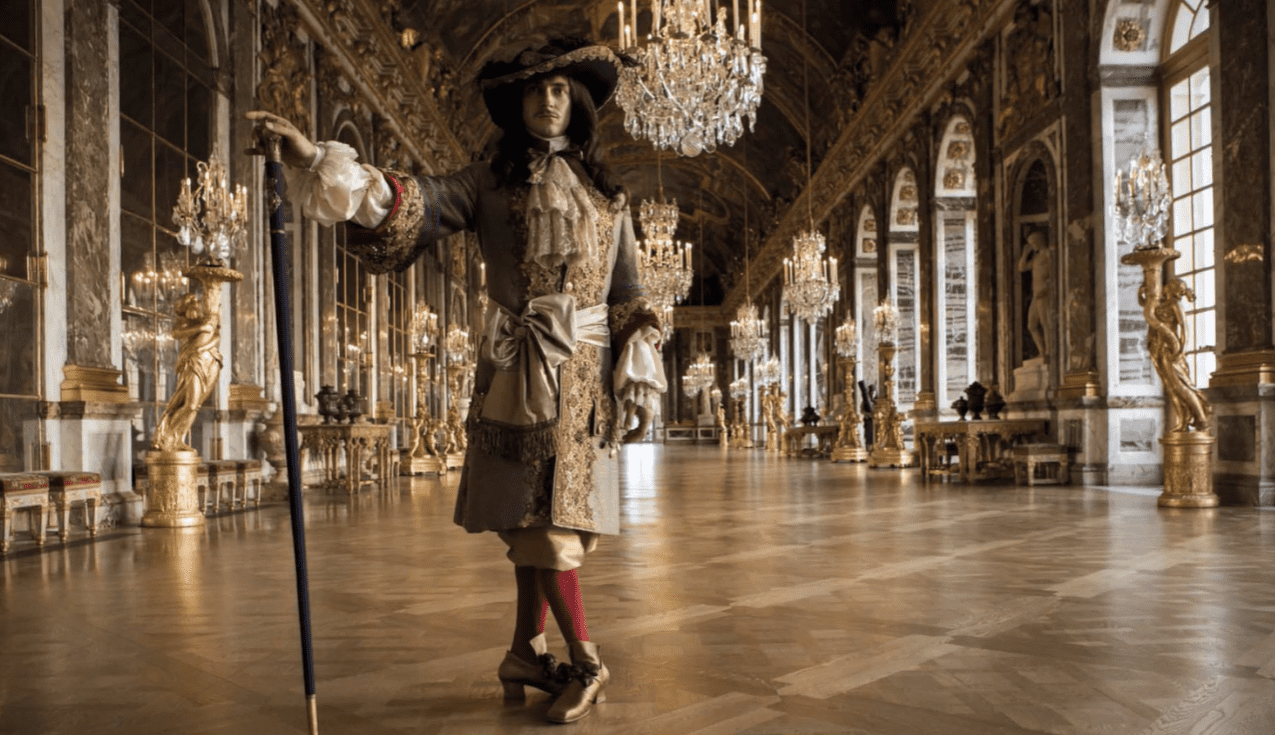 Versailles (2015-2018), Canal+
Versailles (2015-2018), Canal+
38. He Made Them Come To Him
If a French noble wanted to make any money or obtain any sort of position of favor with the king, they had to haul their behinds over to Versailles. It was where courtiers arranged marriages, found employment, and jockeyed for attention, all under the watchful eye of Louis XIV. It’s no wonder he called himself the Sun King. He expected the world to revolve around him, and it actually did at Versailles—but, as always, there was a dark side to it all.
39. He Exercised His Power
Louis XIV played favorites, and if he didn’t see you at court paying your respects, you better expect a pay cut or demotion. This forced nobles to leave their local seats of power and live at Versailles, where he could control them more effectively. He also wouldn’t tolerate any sort of dissent from his courtiers, so he opened and read their letters.
At the same time, he made sure it was worth their while. There was hunting, entertainment, gambling, food, and drink, among other luxuries. No one could say no to the lavish lifestyle he provided at Versailles.
40. His Preferences Were Obvious
So, how much more did Louis XIV prefer his mistress over his wife? Well, at Versailles, the queen got 11 rooms on the second floor. Not bad, right? Well, he gave Madame de Montespan 20 rooms on the first floor and an entourage of 50 people. He also built her a mini-palace out of porcelain on the grounds of Versailles.
Well, porcelain is fragile, and so are hearts, so you can bet that neither lasted forever—but more on that later.
41. He Made France A Superpower
Before this centralization, nobles from the countryside would gather private armies at their seats of power and wage local conflicts, or use their forces to resist royal authority. Louis XIV stopped all of this and turned his attention outward. Louis led an aggressive foreign policy that necessitated building a large army.
From 1667 to 1697, the French armed forces grew from 30,000 to 400,000 men. However, the increases in power and territory that he oversaw had the unfortunate side effect of uniting his (many) enemies.
42. They Were Living On The Edge
Although Louis was more interested in cementing France’s status as the central power in Europe, there were some problems at home that he simply could not ignore. Throughout the 1670s, Louis XIV had led a happy life with Madame de Montespan. They had seven children together, and one of de Montespan’s dear friends, Madame de Maintenon, acted as their governess.
When the king legitimized his children with de Montespan, she became an even more important part of their household. You know that saying about keeping your enemies closer? Well, Madame de Montespan had one in her midst—she just didn’t know it yet.
43. She Couldn’t Stop It
Madame de Montespan deliberately filled her staff with “virtuous” and/or “homely” ladies to keep Louis XIV’s eyes on herself. This hiring strategy backfired horribly. Madame de Maintenon, the governess who cared for the king’s children with Madame de Montespan, was the polar opposite of the ultra-dramatic chief mistress—and that was just what Louis XIV was looking for.
44. She Was A Breath Of Fresh Air
Madame de Maintenon attracted Louis’s attention with her otherworldly piety and modesty. In that way, she was a lot like his first chief mistress, Louise de la Valliere. Both were deeply religious and uninterested in rubbing their relationship in his wife’s face. Frankly, this was a much-needed blessing in disguise, considering what happened next.
45. He Lost His Wife
In July of 1683, Queen Maria Theresa fell desperately ill. When Louis XIV saw how bad it was, he prepared for the worst. Within a week, she succumbed to her illness, and her passing was extremely painful. He said that her loss was “[…] the first chagrin she has ever given me." Louis XIV was utterly heartbroken by both the loss and the horrific circumstances.
Their union had been distant, but it hadn’t always been that way. The same cannot be said of his children with her…
46. He Didn’t Like His Own Son
When we think of the sagas of the great monarchs, many are tainted by the tragedy of the ruler who longs for an heir but struggles to produce one. Think Henry VIII or Elizabeth. Well, Louis XIV had the opposite problem. His relationship with his heir and namesake, Louis, the Grand Dauphin, was extremely similar to the distant relationship he’d had with his own father.
At first, Louis XIV had regarded the boy with suspicion and jealousy. The boy’s tutor had an even harsher regard, comparing the Grand Dauphin to Queen Maria Theresa, essentially saying both were dumb and harmless. Ouch.
47. He Lost His Favorite
Louis XIV didn’t have much better to say about the boy. He later remarked that he was “indolent, fatuous, and dull.” Tell us how you really feel! Four of his children with the queen hadn’t survived infancy, but one other did: a daughter, and she was the king’s favorite. They had named her Marie Therese for the queen, and much like her mother, she suffered a terrible fate, passing on shortly after her fifth birthday.
48. They Weren’t Very Creative
Of some 22 children that Louis XIV had with various women, they named 11 of them Louis or Louise—which frankly, is hilarious. His first son Louis might not have been his favorite, but he did have a soft spot for another Louis, the son he had with Madame de Montespan. Louis XIV showered the boy with gifts and titles, and even gave him a spot in the line of succession.
That’s just how little Louis XIV thought of his firstborn son.
49. He Had A Secret Ceremony
Louis XIV still kept mistresses during the first few years of his affair with Madame de Maintenon—but then, with the loss of his wife, everything changed. The drama of the previous five years weighed heavily on him. Three months after the queen’s passing, he married Madame de Maintenon in secret, and, as far as historians can tell, stopped having mistresses.
But just because their relationship was monogamous didn’t mean that it was conventional.
50. She Wasn’t Good Enough For Them
Madame de Maintenon had a humble background. Her father had been a prisoner, and her mother, the daughter of a prison director—spicy! It was mostly by chance and luck that she’d landed in the king’s court. Sadly, this lowly upbringing meant that the king could never formally marry her. Their secret marriage was morganatic, which meant that she wouldn’t become queen, and that no one would acknowledge the union.
Regardless, she still found a way to make a name for herself.
51. He Changed Completely
From that moment on, Louis XIV and Madame de Maintenon rarely passed a day without seeing each other. She wielded great influence and power over his decisions—a dicey proposition, but in this case, it mostly worked out in the king’s favor. Her piety influenced him. As mentioned, he stopped having mistresses, and he let her open a school for girls.
It was basically the healthy, egalitarian relationship he’d never had before—and considering what was on the horizon, having an intelligent ally and advisor was likely very welcome.
52. He Faced His Greatest Enemy Yet
It had happened before that the sheer size, force, and power that France wielded had united its enemies—but those instances were nothing compared to the Grand Alliance. Countries opposing France formed the coalition, which grew to include England, the Dutch Republic, the Holy Roman Empire, Spain, Portugal, and Savoy. Yeah, let’s just call it France Vs. Everybody.
Louis XIV had won multiple conflicts before, and he had the massive army he’d acquired over the previous years backing him up. But this time, would it be enough?
53. He Was Going To Demolish Them
The Nine Years’ War began in 1688, and Louis XIV immediately began to crush his enemies wherever he met them. While his men met on the battlefields, Louis XIV and his ministers worked behind the scenes to tear apart the Grand Alliance from the inside. Still, his ego refused to let him give up territory in order to lure Alliance leaders away from the cause. And then, disaster struck.
54. France Was Suffering
Louis XIV’s army had ballooned to its largest size by 1693—the same year that France suffered a famine which resulted in the loss of over two million of its citizens. The economy was in crisis, and his forces were fatigued. Louis knew that he’d have to approach the table and negotiate peace, but he wanted to go out on a high note.
His forces prevailed on many fronts, but financial and physical exhaustion set in. France gave up a lot, but also retained important territories. Louis XIV was in a hurry to make peace and not give the Grand Alliance any reason to fight him—but he had ulterior motives for this.
55. He Saw Into The Future
Louis XIV did not want the countries of the Grand Alliance to work together any more—and he had a devious reason for this. Charles II, the childless King of Spain, was only in his 30s, but had been ailing his whole life. And, if you’ll remember correctly, Louis XIV had used an unpaid debt to ensure that his grandson was in the line of succession for the Spanish throne.
His big plan was about to come to fruition—but when the rest of Europe realized what he was doing, they were not pleased.
56. He Nearly Had Them
It’s not that he was technically breaking any rules. After all, Charles II had agreed to make Louis XIV’s grandson Philip of Anjou his heir. The problem was that if the royal family of France were to amass that much territory in one fell swoop, it would disturb the balance of power in Europe. Thus, Louis XIV’s worst nightmare came true.
The Grand Alliance came together once again—this time, to take on France and Spain.
57. He Wasn’t Alone
The Wars of Spanish Succession were nearly twice as long and exponentially more exhausting than the conflict that had preceded it, but this time, there was one difference. France wasn’t fighting alone. With Spain, they proved to be formidable opponents to the Grand Alliance. The passing of the Holy Roman Emperor and a succession crisis in England forced many of the countries to the negotiating table.
Ultimately, France and Spain agreed to a permanent separation in order to end the conflict. Louis XIV might not have got to exercise power over Spain, but his grandson got to keep the throne—and for a man of 76 years old, that was enough.
58. He Had An Unexpected Hobby
Louis XIV knew there was more to life than the battlefield and keeping up a healthy stable of mistresses. During his time on the throne, Louis XIV was a devoted patron of the arts and France saw a cultural invigoration. One of his most ardent passions would surprise many people. Louis XIV not only loved ballet, he loved dancing himself. He appeared in 40 major ballets, playing upwards of 80 roles. That amount actually rivals the career of any professional dancer!
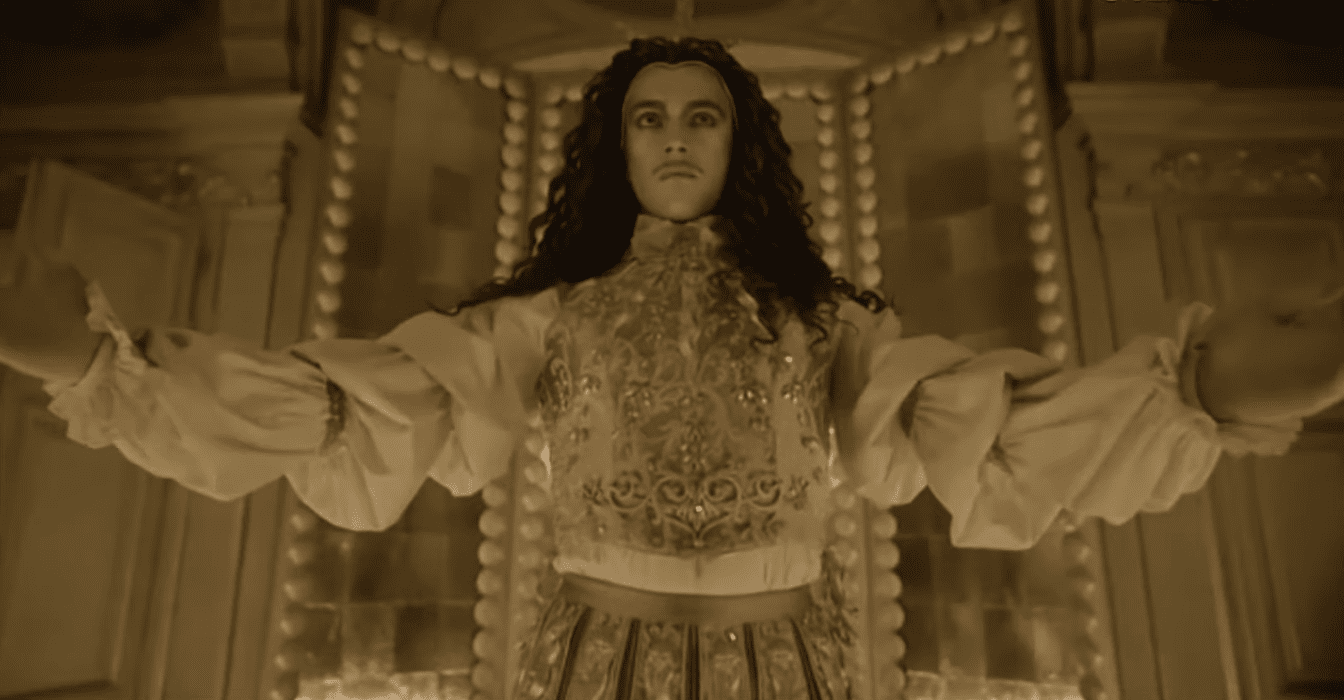 Versailles (2015-2018), Canal+
Versailles (2015-2018), Canal+
59. He Was The Original Influencer
Sure, Louis XIV was dedicated to the visual arts—but a lot of this was driven by the fact that the man really liked looking at himself. There was actually an entire centralized system for reproducing his royal image. He commissioned over 300 formal portraits of himself, all of which portrayed him majestically or with allegorical attributes that reinforced his status as the divinely chosen king. And you thought selfie culture was bad…
60. He Was A Prima Donna
Louis XIV’s obsession with his own image didn’t only exercise itself through works of art. He was a primper extraordinaire, with a vast wardrobe of clothing, shoes, and wigs at his disposal, all of which he used to craft his image and try to make himself more imposing. With his tall wigs and heeled shoes on, Louis XIV came to nearly 7’ tall—but the truth was, he was actually only about 5’4". It didn’t just start with Napoleon after all…
61. Dark Rumors Followed Him
Louis XIV may have tightly controlled his image when it came to the visual arts, but he couldn’t oversee every artistic realm—and it led to one of the most compelling rumors of his reign. In the mid-19th century, author Alexandre Dumas published a novel where he told the story of an unidentified prisoner in an iron mask. In Dumas’ version of the legend, the man is actually related to the king. And the story didn’t just appear out of nowhere…
62. They Said He Was Covering Something Up
It wasn’t just a legend. There was actually a mysterious prisoner who was kept in different French jails for 34 years, from 1669-1703. No one knew or ever definitively uncovered the man’s identity, but different stories swirled—and most of them led straight back to Louis XIV. The author Voltaire claimed he was the king’s illegitimate half-brother by Anne of Austria and Cardinal Mazarin.
Others made different claims, including one that the man was Louis XIV’s real father, as he was born at a time when his parents were basically estranged. Still, it wasn’t the most prevalent story.
63. They Believed He Was Hiding An Heir
Most simply believed that Louis XIV had been born with a twin brother. His family had a history of twins, so it made sense. The hypothesis was that Louis XIII and Anne of Austria had hidden the younger twin, fearing a struggle for the throne. They then sent the boy away to grow up under a different name. When he discovered his heritage, he came back to challenge the king—only to be thrown in jail with an iron mask to conceal his appearance.
Historians have disputed this sequence of events, but the shadow of these dark rumors followed Louis XIV through his reign…and beyond the grave.
64. They Were Too Close
There was another dark rumor that followed Louis XIV to his final days—and it concerned a brutal betrayal. Earlier, we mentioned that courtiers had speculated that Louis XIV was involved with his brother Philippe’s first wife, Henrietta. Well, one rumor that they were never able to shake was that Louis XIV had actually fathered Henrietta and Phillippe’s first daughter, Marie Louise.
Later, Marie Louise fell hard for the Grand Dauphin, Louis XIV’s oldest son—or, her rumored half-brother. Louis XIV had to arrange a marriage for her to keep them apart. Open up the gene pool, guys. You won’t regret it.
 Versailles (2015-2018), Canal+
Versailles (2015-2018), Canal+
65. Scandal Consumed The Court
If the shift from Madame de Montespan to Madame de Maintenon seemed a little too smooth, it's because there's one major part we haven't mentioned yet. See, in 1677, an explosive scandal threatened to tear the lives of Louis XIV and Madame de Montespan apart. Louis XIV’s eye began to stray somewhat, and it fell on the Duchess of Fontanges. But before anything else could happen, she suddenly died of mysterious causes.
Many began to whisper that Madame de Montespan had poisoned her—and then, the rumors intensified.
66. His Lovers Turned On One Another
Poison was the subject of the day at the French court, as one of their own had recently been executed for poisoning her family. Just like the Salem witch trials, people began accusing anyone and everyone of poison plots. First, the attention fell on Olympia Mancini, an occasional paramour of the king’s. They accused her of poisoning the King’s old mistress, Louise de la Valliere, his sister-in-law, and her own husband, among others.
Many thought that she’d threatened to poison Louis XIV himself, saying “come back to me, or you will be sorry.” She avoided any trouble by fleeing France—but her story was just the beginning of the Affaire des Poisons.
67. They Said She Did Evil Things
Next, the witnesses who’d provided evidence against Olympia Mancini came for the king’s chief mistress, Madame de Montespan—and the accusations were truly disturbing. They claimed that de Montespan had come to them for help using black magic to keep the king’s love. There were tales about praying to the devil and a black mass performed by a priest over de Montespan’s undressed body. Somehow, that wasn’t even the craziest story.
68. They Claimed She’d Bewitched Him
The witnesses also claimed that Madame de Montespan and a poison dealer had been sacrificing babies and putting their remains in Louis XIV’s food for over a decade. Yikes. On top of that, one of de Montespan’s maids—who’d also been sleeping with Louis XIV—was implicated. The courts declined to pursue these accusations against Madame de Montespan, and nothing was even proven, but the damage was done.
69. He Was Over It
The sheer amount of people close to Louis XIV who had been implicated in the Affaire des Poisons was shocking. It all cast a very negative light on the French courts and Madame de Montespan in particular. While all her courtly scheming and manipulation had once seemed fun, Louis XIV had seen what kind of hot mess it could quickly turn into, and by now it turned him off. He shifted his attentions elsewhere—but he didn’t have to go very far.
70. He Was Winding Down
After everything he’d done during his reign, it might have seemed like Louis XIV was invincible—but no one lives forever, even those with the divine right to rule. Louis XIV had suffered from multiple health problems throughout his life, and they intensified as he entered his 70s. Still, he lasted a lot longer than some of the others who were close to him…
71. He Faced A Succession Crisis
Louis XIV was clearly not a huge fan of his son, the Grand Dauphin, and it’s likely that he didn’t want him to become king. Luckily, the Grand Dauphin was good at two things: starting a family and dying young. He passed on suddenly in 1711, but at least he’d had a number of sons in his lifetime. Well, the tragedy didn’t end there.
Louis XIV’s grandson, the Duke of Burgundy, was next in line for the throne—until he caught measles and passed on just a year after his father. Louis XIV did have 22+ kids…I’m sure he’ll figure something out.
72. There Could Only Be One
Louis XIV’s extremely capable grandson Philip would’ve been next in line, if he hadn’t renounced the throne to rule Spain. That left his great-grandson through his grandson Louis, Duke of Burgundy. Can you guess what his name is? That’s right, also Louis. The child was only five, but Louis XIV had no other choice, so he set his plan in motion.
He feared that his nephew Philip II, who had a legitimate claim to the throne, would try and worm his way in, so he wrote a provision in his will that would limit Philip’s contact with the heir apparent. If this sounds familiar, it’s because Louis XIV’s father tried something similar, and it didn’t work. Hmm, maybe it’ll be different this time…
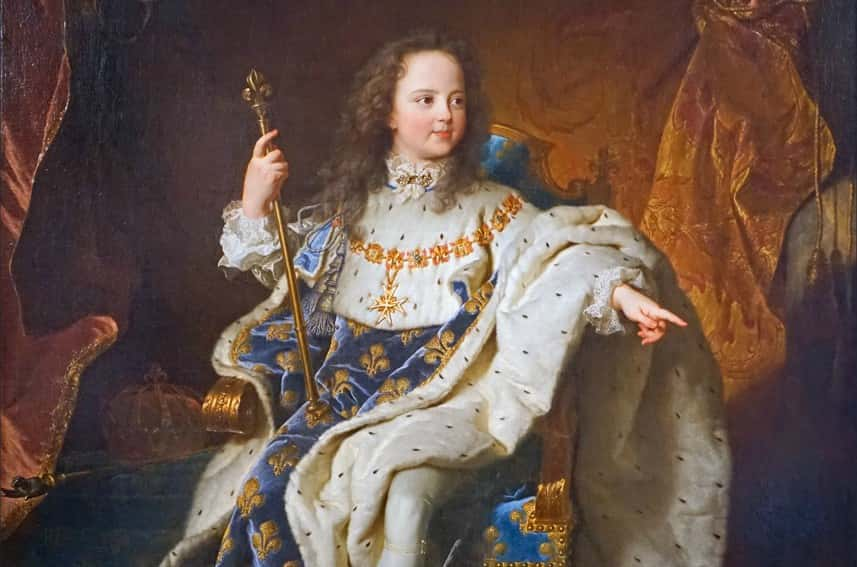 Flickr The future Louis XV
Flickr The future Louis XV
73. His Record Hasn’t Been Beat
Louis XIV began to suffer from gangrene in the late summer of 1715 and succumbed to a painful death in September of that year at the palace he’d built in Versailles. He was four days shy of his 77th birthday and his reign of 72 years is the longest reign by a monarch in history. Upon his passing, the throne went to his great-grandson, who became King Louis XV at the age of five.
And, as predicted, history repeated itself, and no one respected those important new provisions in Louis XIV’s will. Sigh. Well, as you can imagine, the drama didn’t end there…
74. He (Eventually) Showed Humility
During his most authoritarian years as ruler, the quote “I am the state” had been attributed to Louis XIV. However, this story is apocryphal, and a deathbed statement contradicted it completely, showing his faith in the France he’d built as king: "Je m'en vais, mais l'État demeurera toujours,” or, "I depart, but the State shall always remain."
75. They Turned On Him
Louis XIV’s body was laid to rest in a basilica outside of Paris—but after the disastrous decades that followed his passing, the people of France saw it fit to deal him one final indignity. During the French Revolution, rebels exhumed and destroyed his remains after breaking into the basilica. But it didn’t stop there…
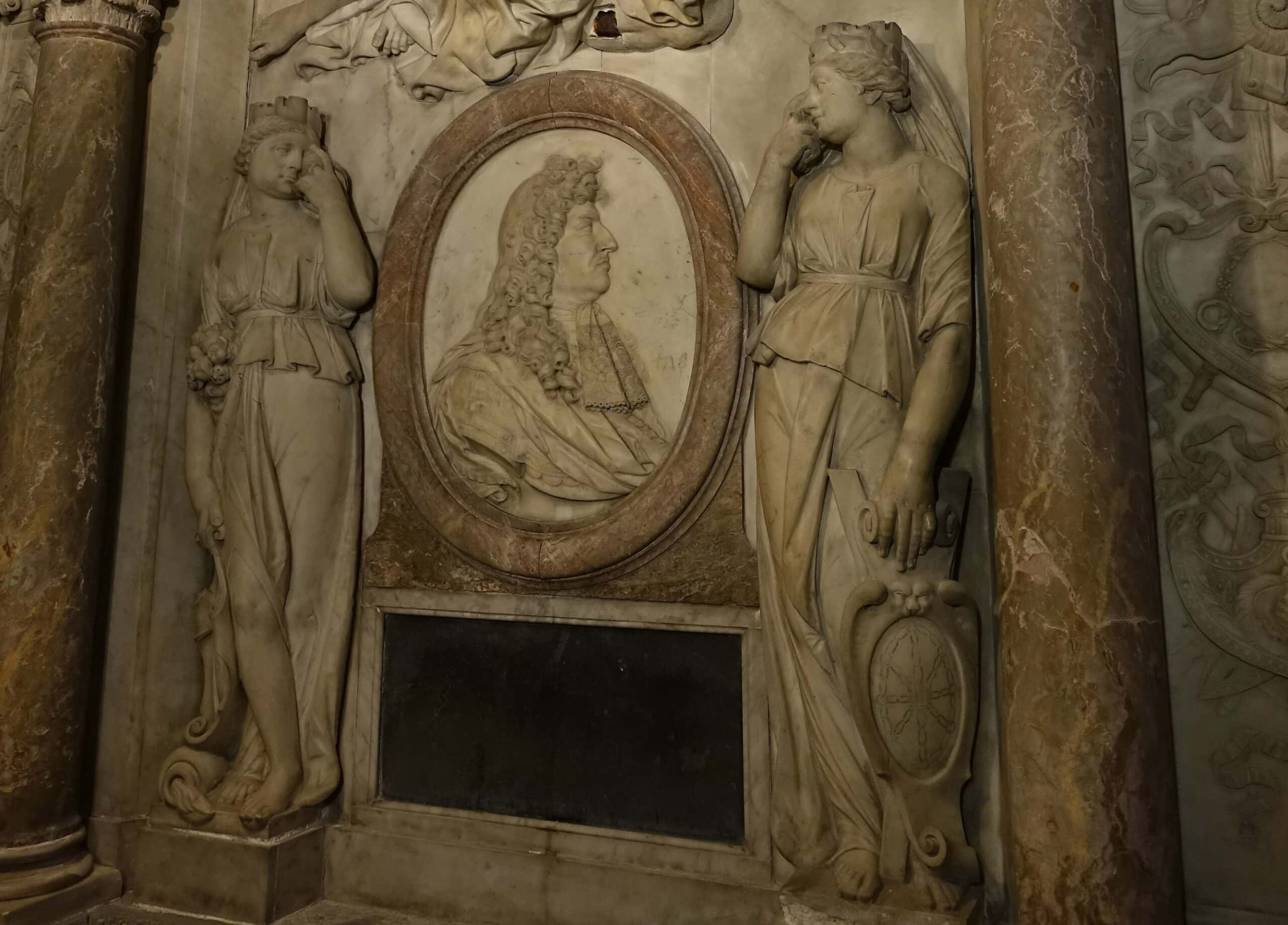 Wikimedia Commons, Guilhem Vellut
Wikimedia Commons, Guilhem Vellut
76. He Had An Absurd Ending
In 1848, a piece of Louis XIV’s mummified heart was placed in a silver locket by the Archbishop of York, Lord Harcourt. He presented it to a colleague, William Buckland, who also happened to be a geologist. Thinking the heart to be a rock (and curious to guess what mineral), Buckland promptly shoved the body part into his mouth and accidentally ate it.
What a way for the final relic of the once-glorious Sun King to finally go out…
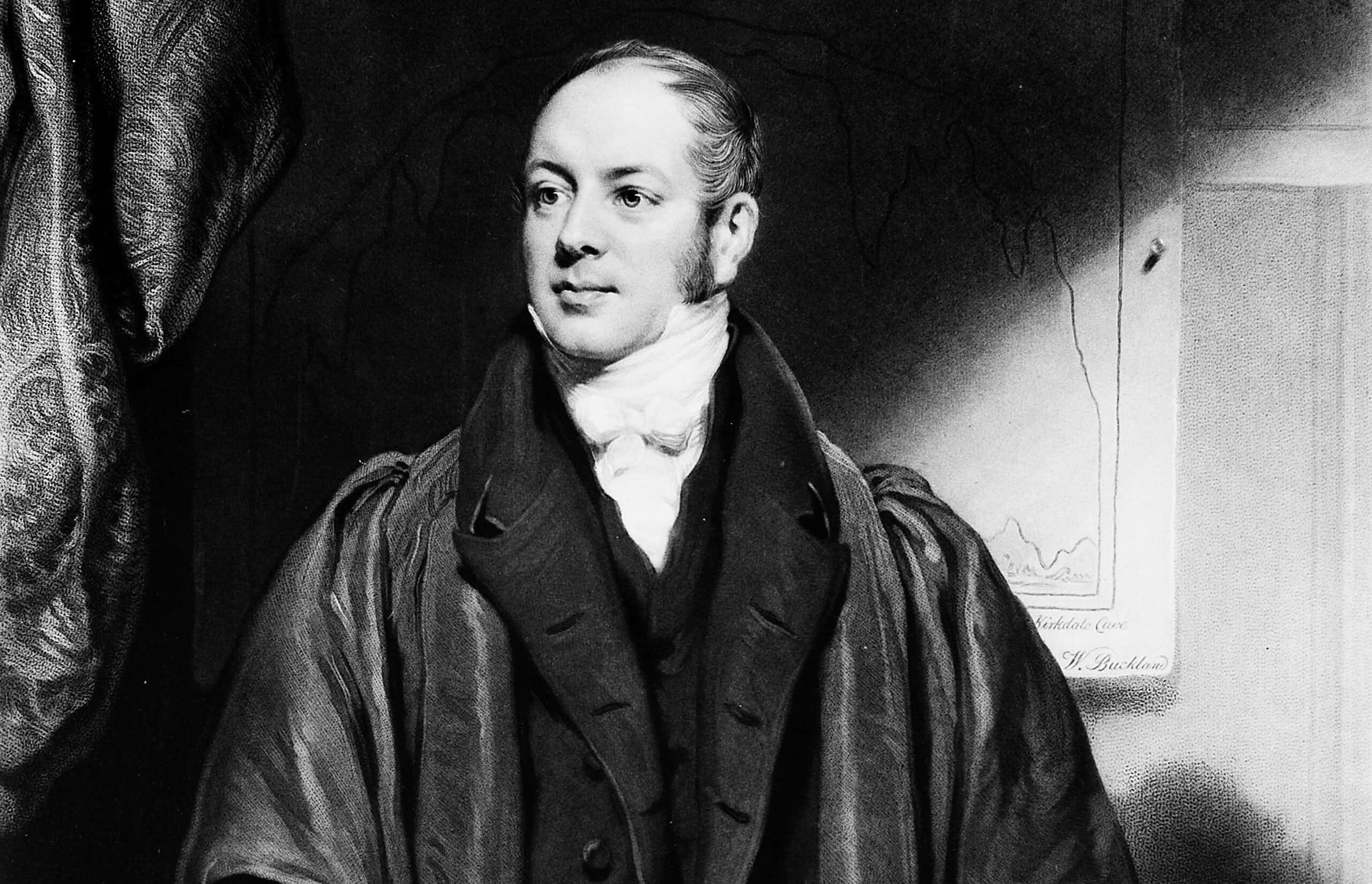 Wikimedia Commons, Wellcome Images
Wikimedia Commons, Wellcome Images
Sources: 1, 2, 3, 4, 5, 6, 7, 8, 9, 10, 11, 12, 13, 14, 15, 16, 17, 18, 19, 20, 21, 22, 23, 24, 25, 26, 27, 28
A previous version of this article stated that Alexandre Dumas' account of the Man in the Iron Mask was published in the 17th century. It has been updated to state that it was published in the mid-19th century.

